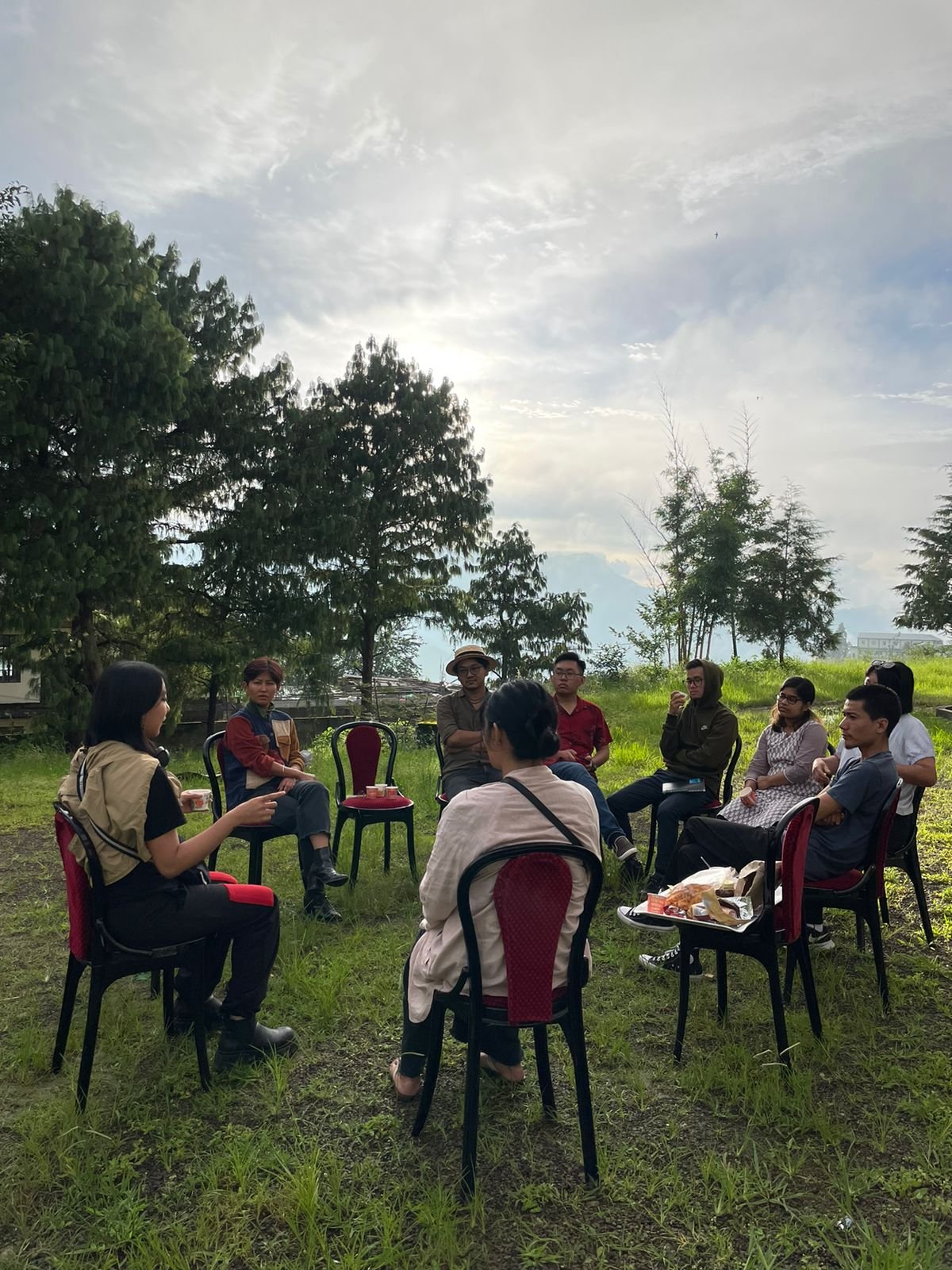
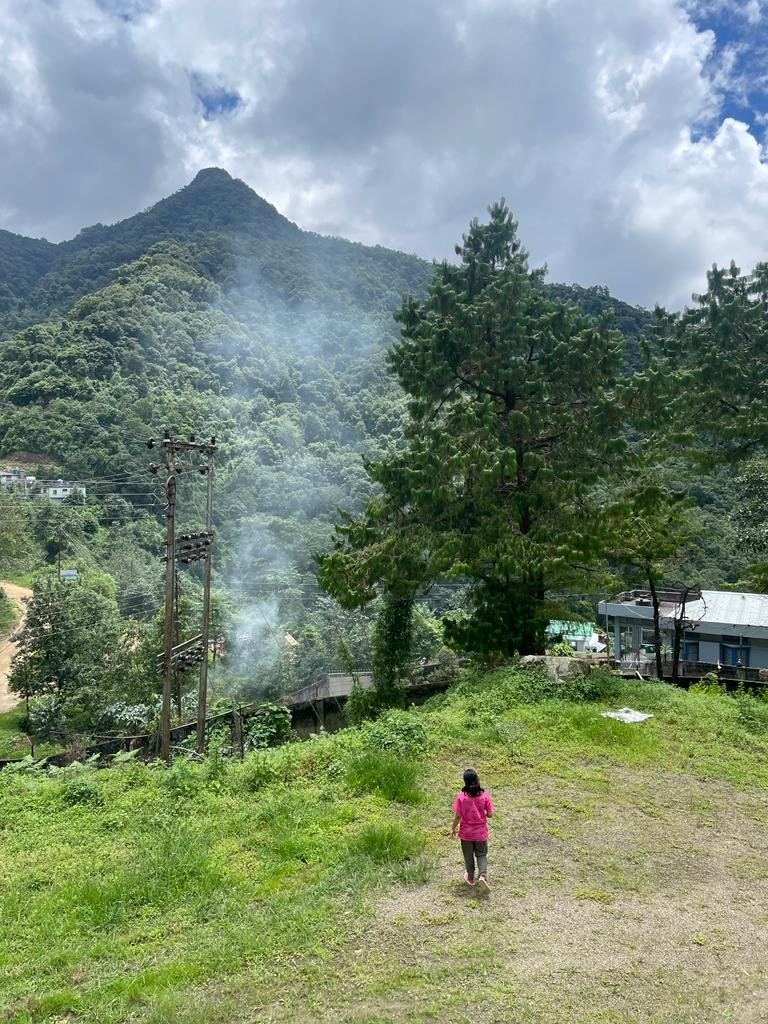
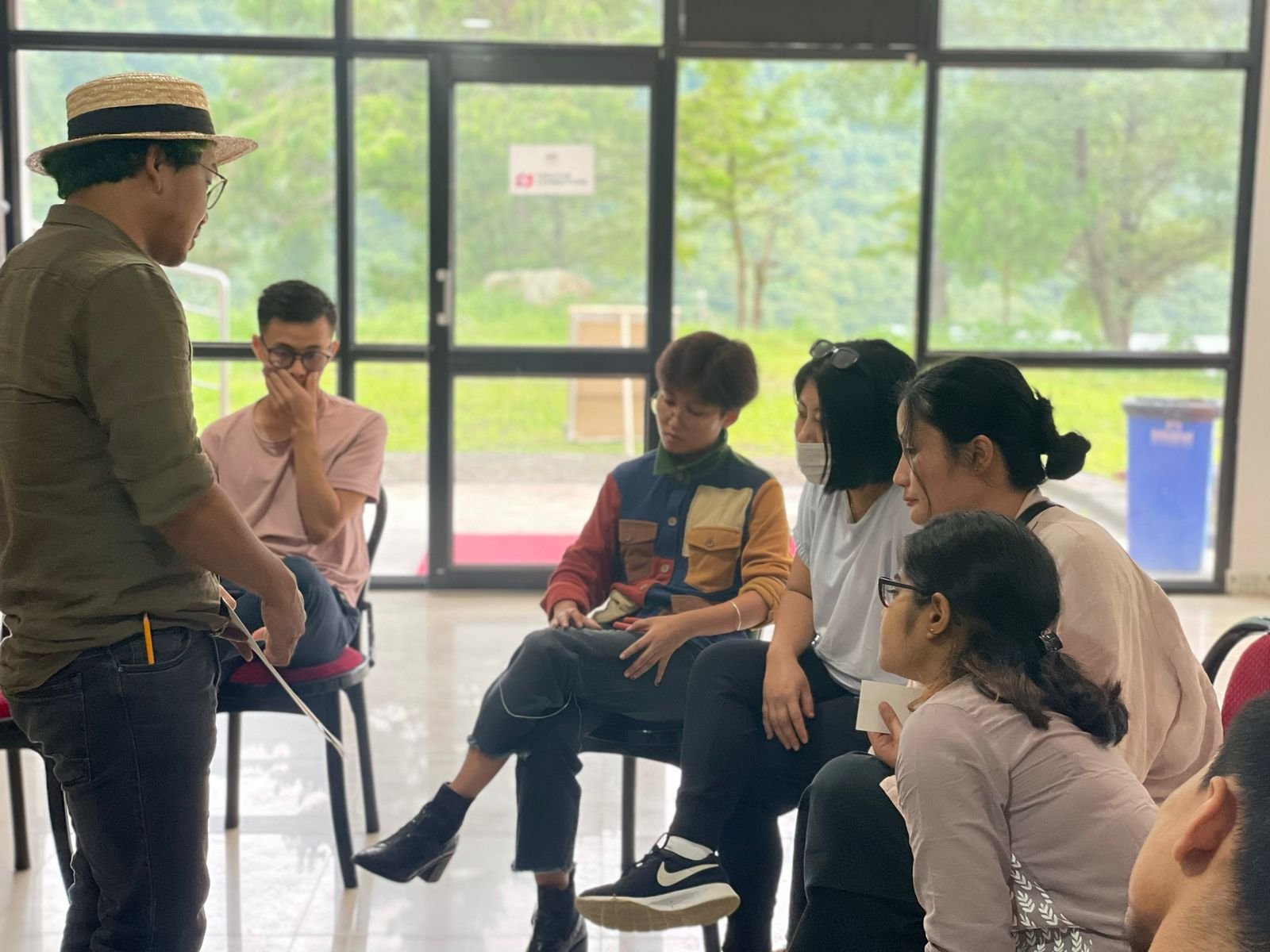
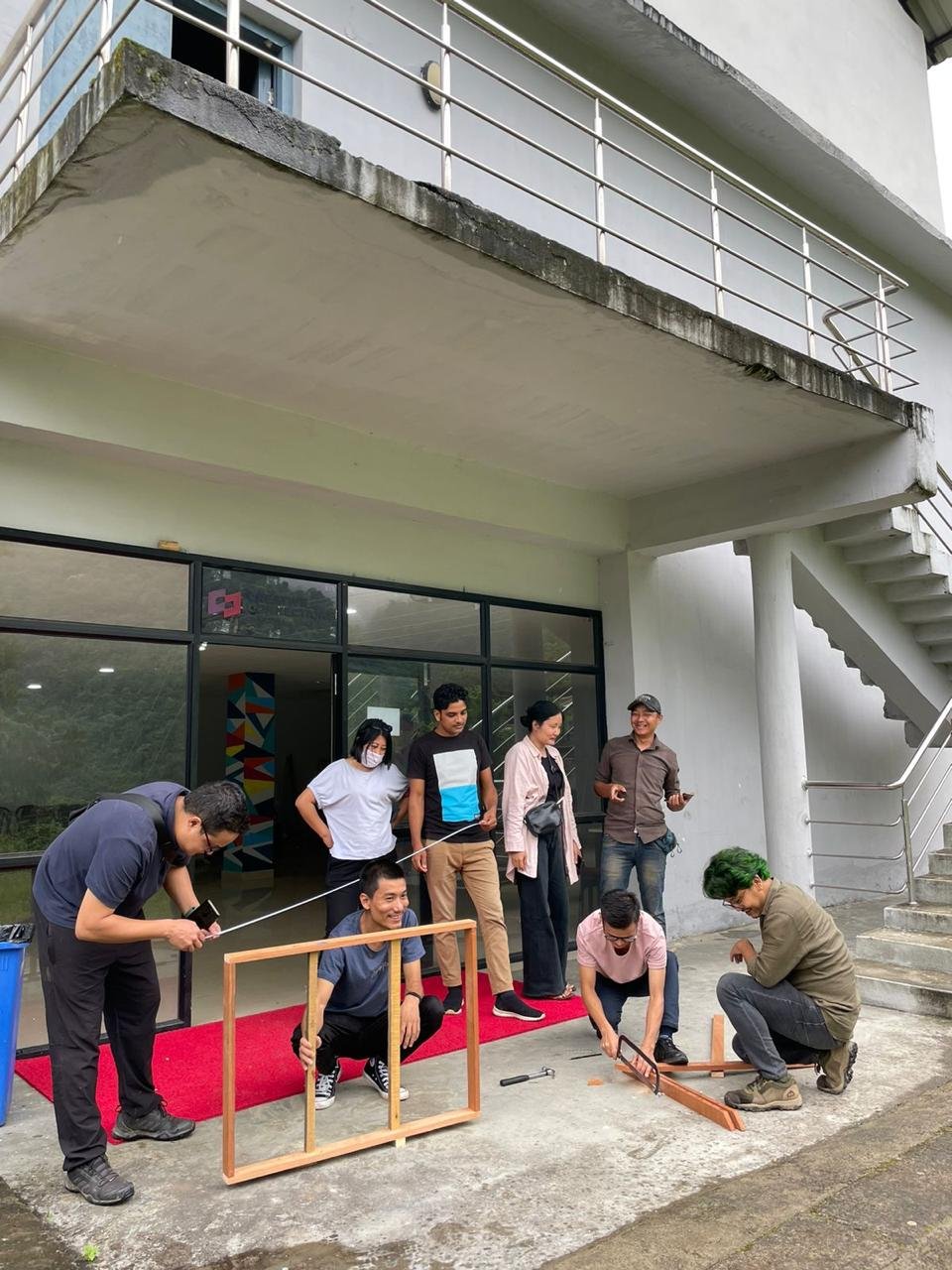
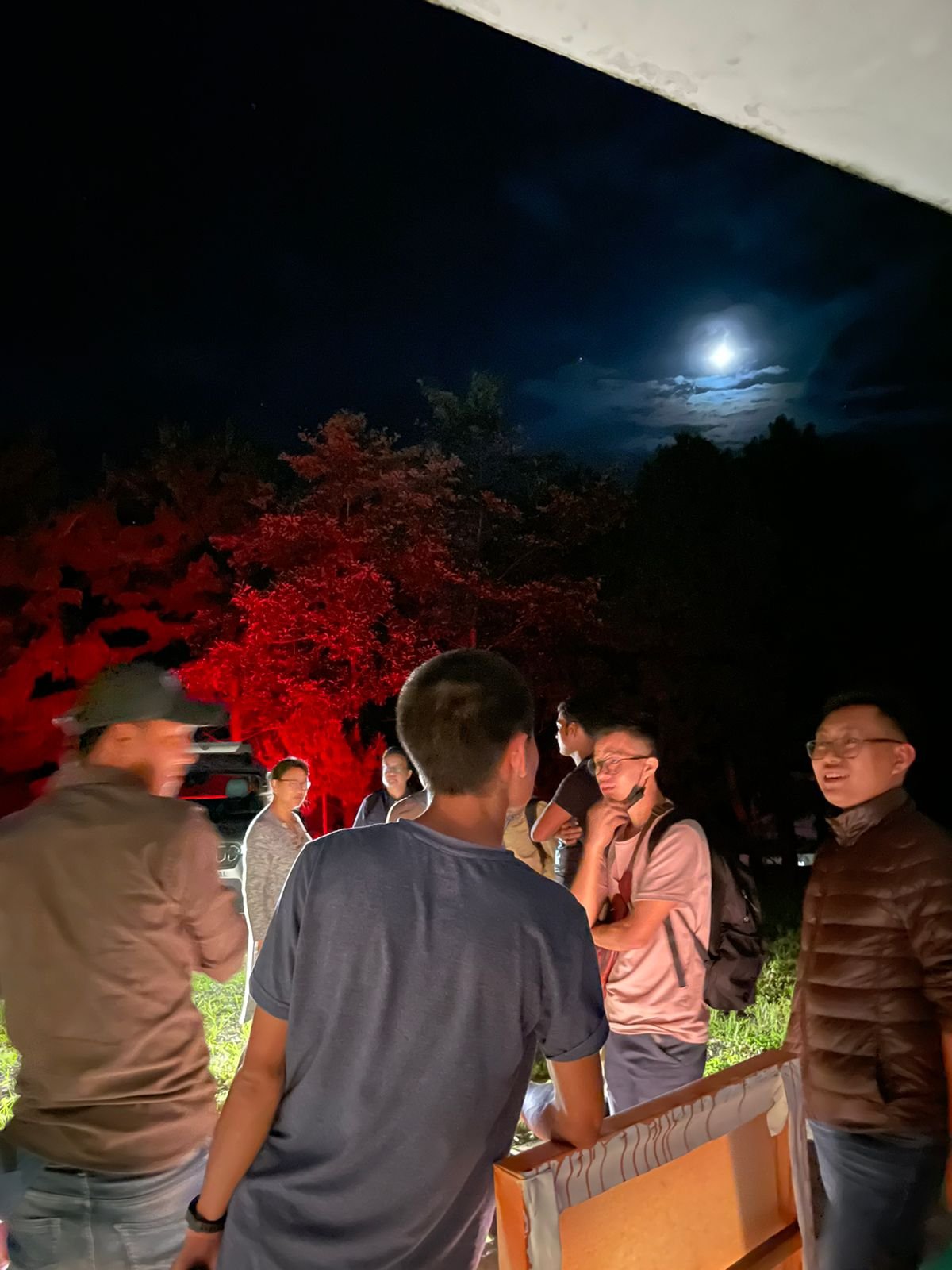

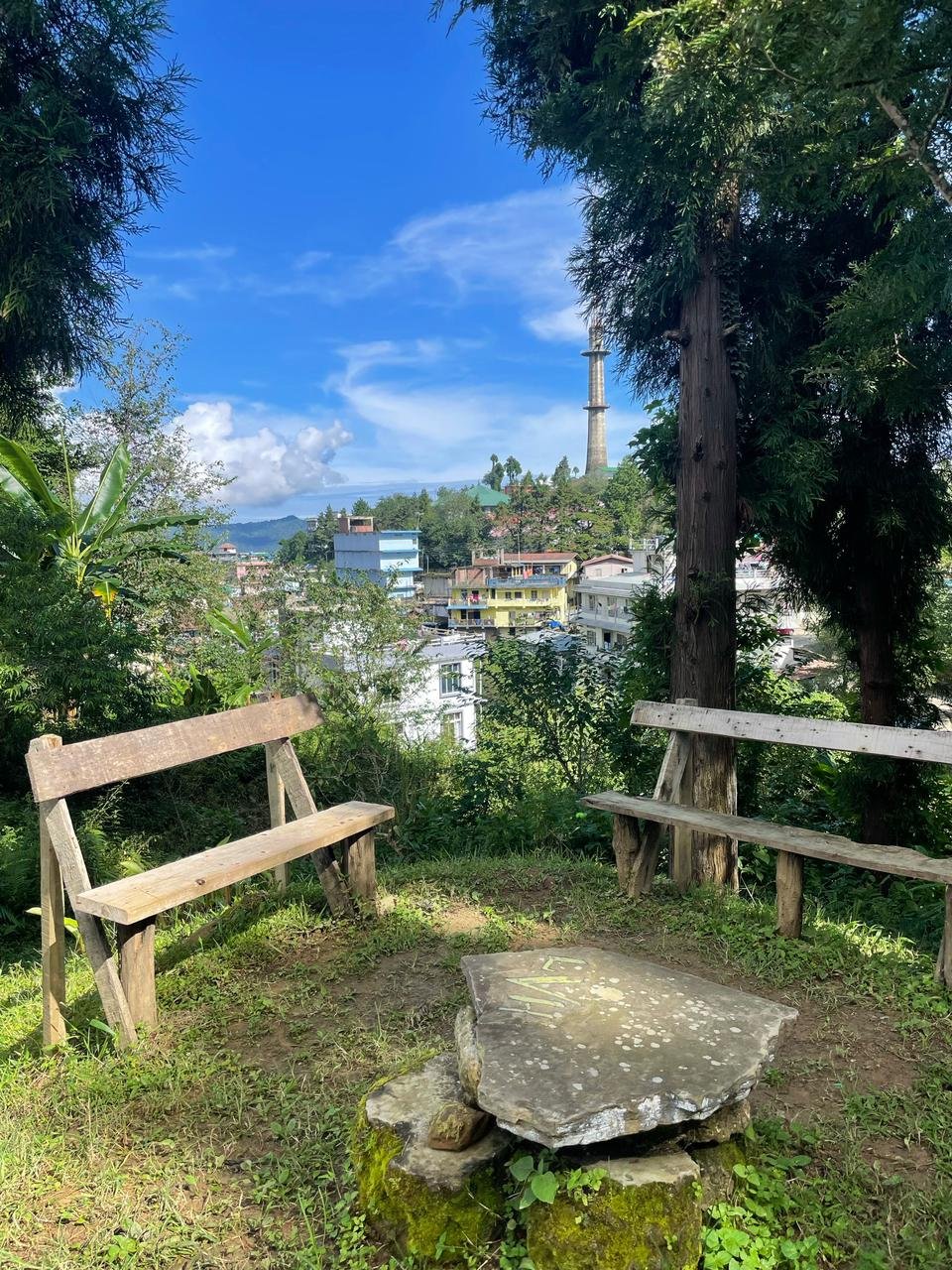
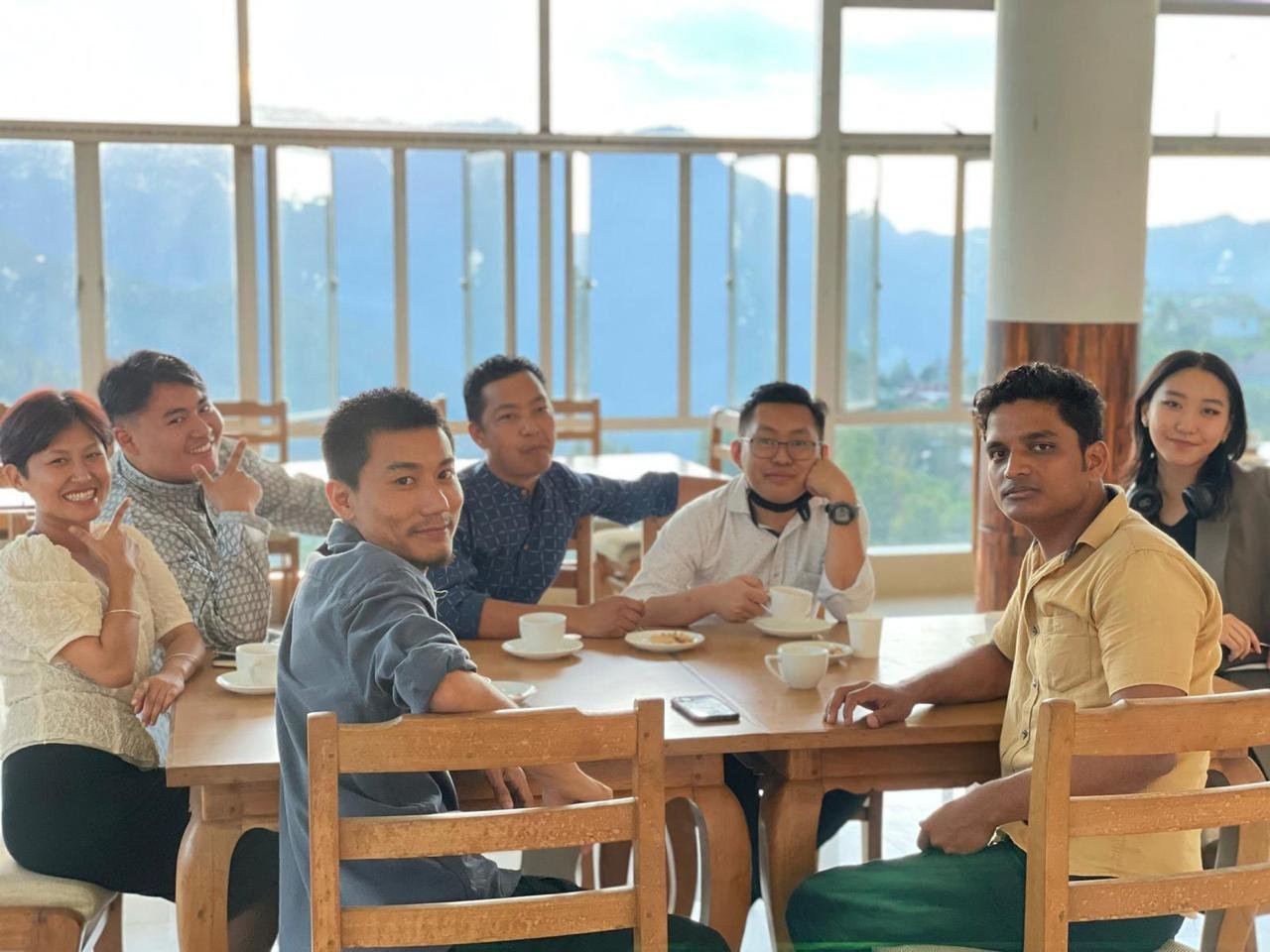

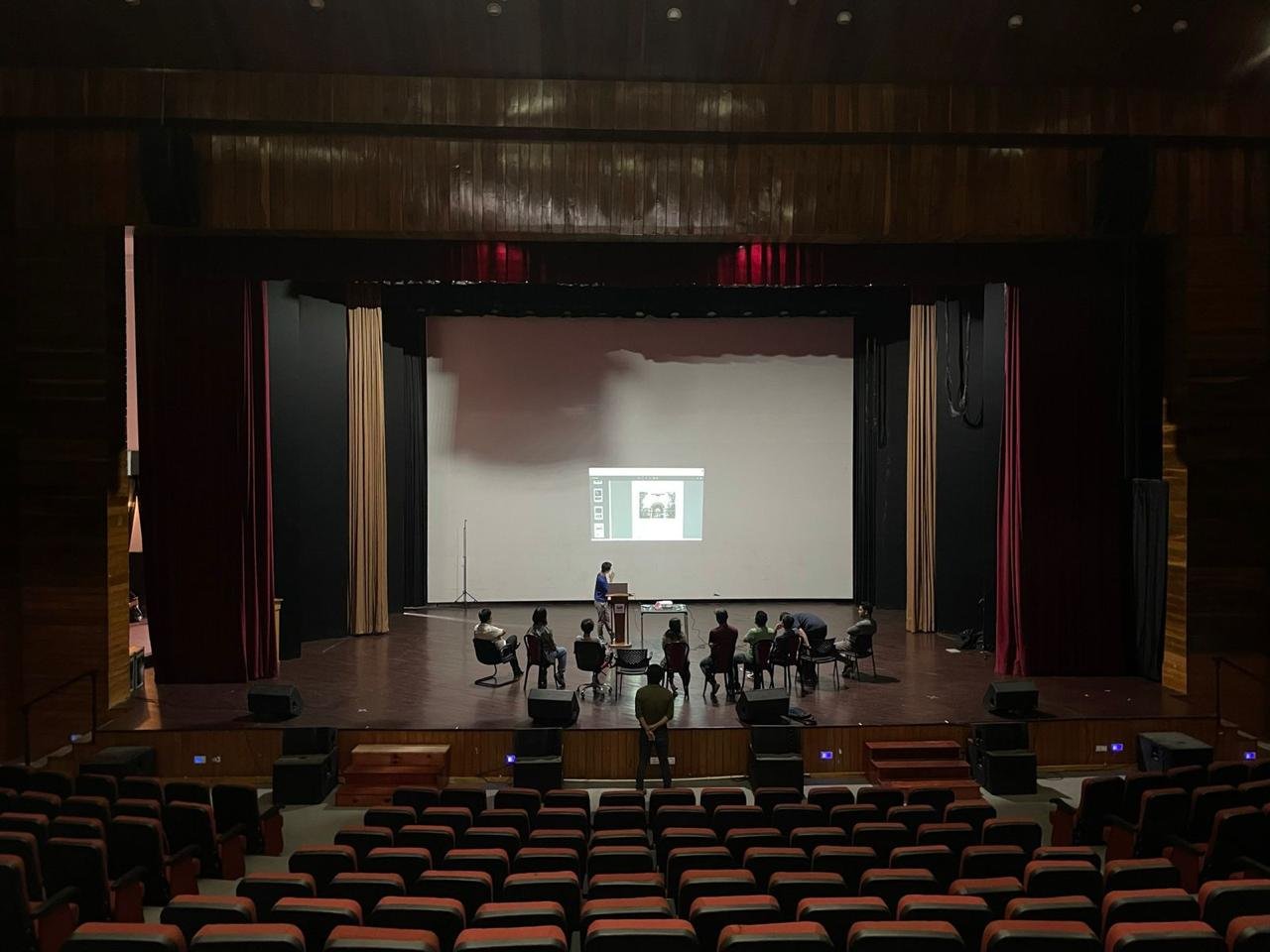
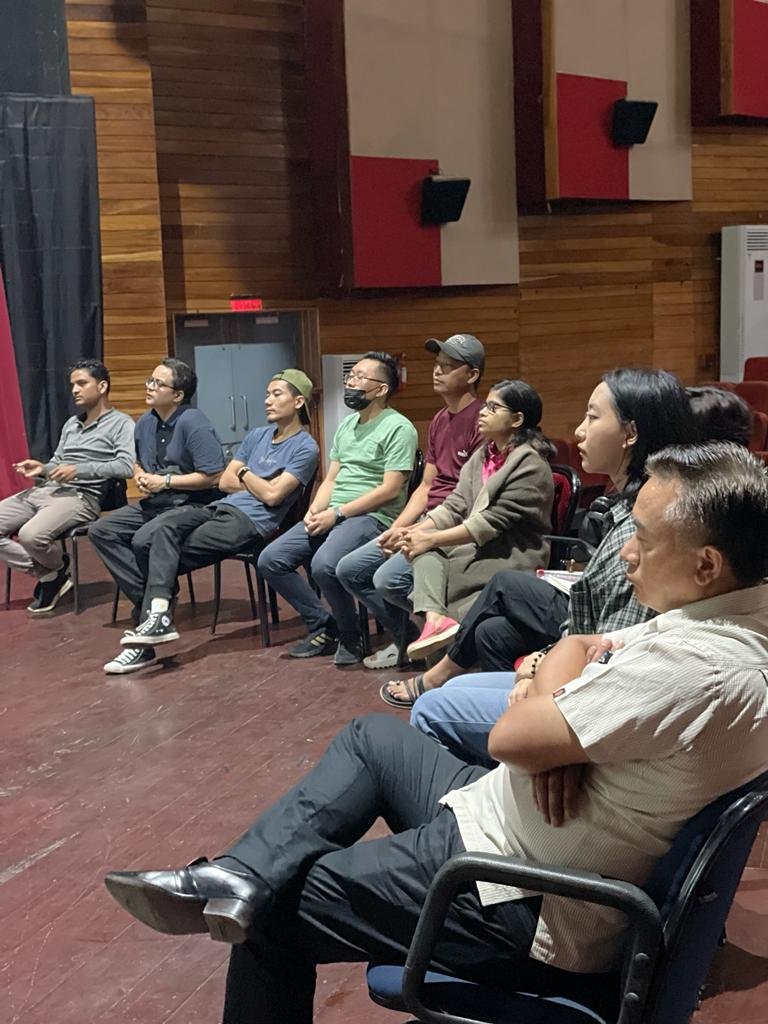
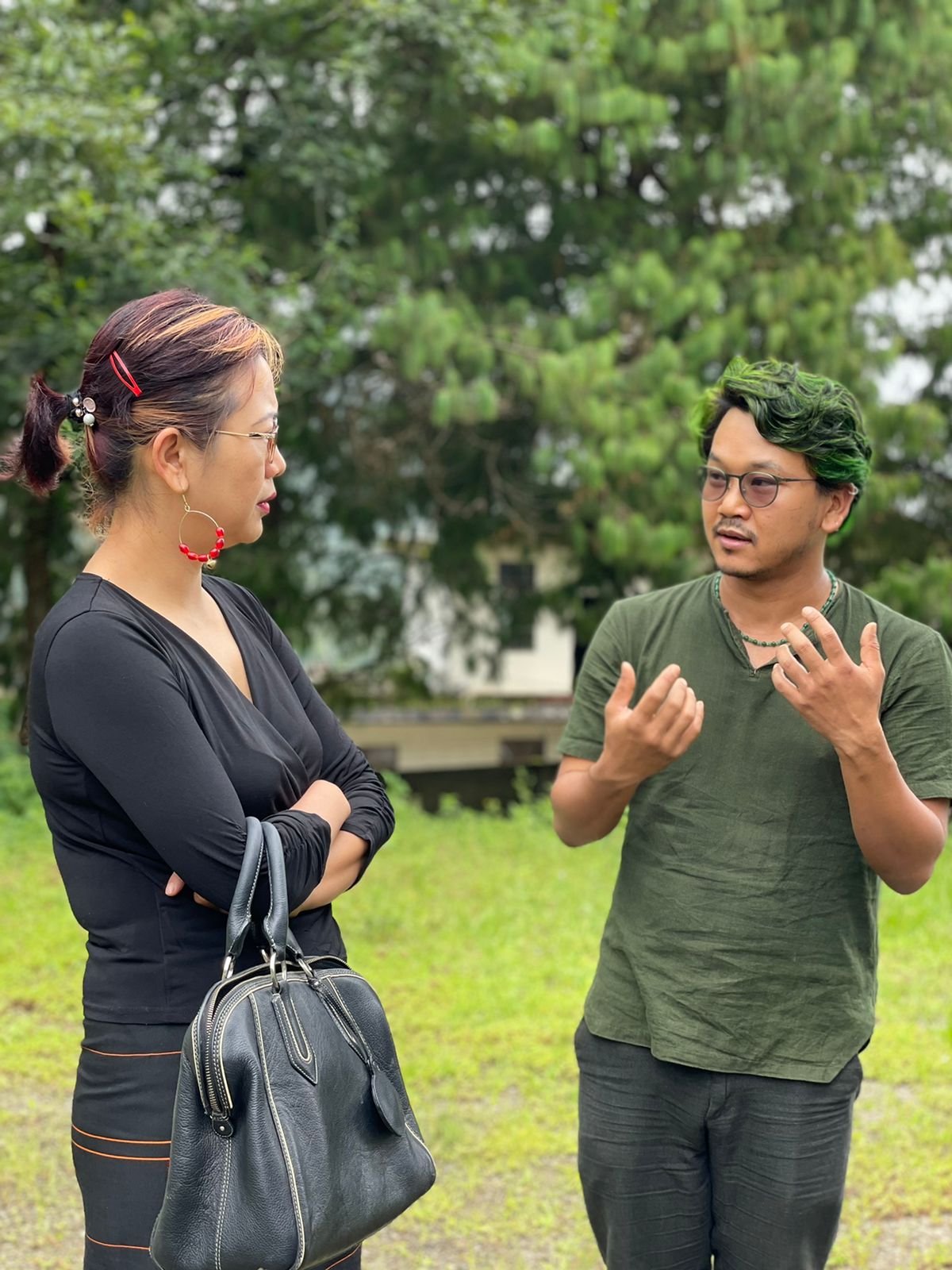


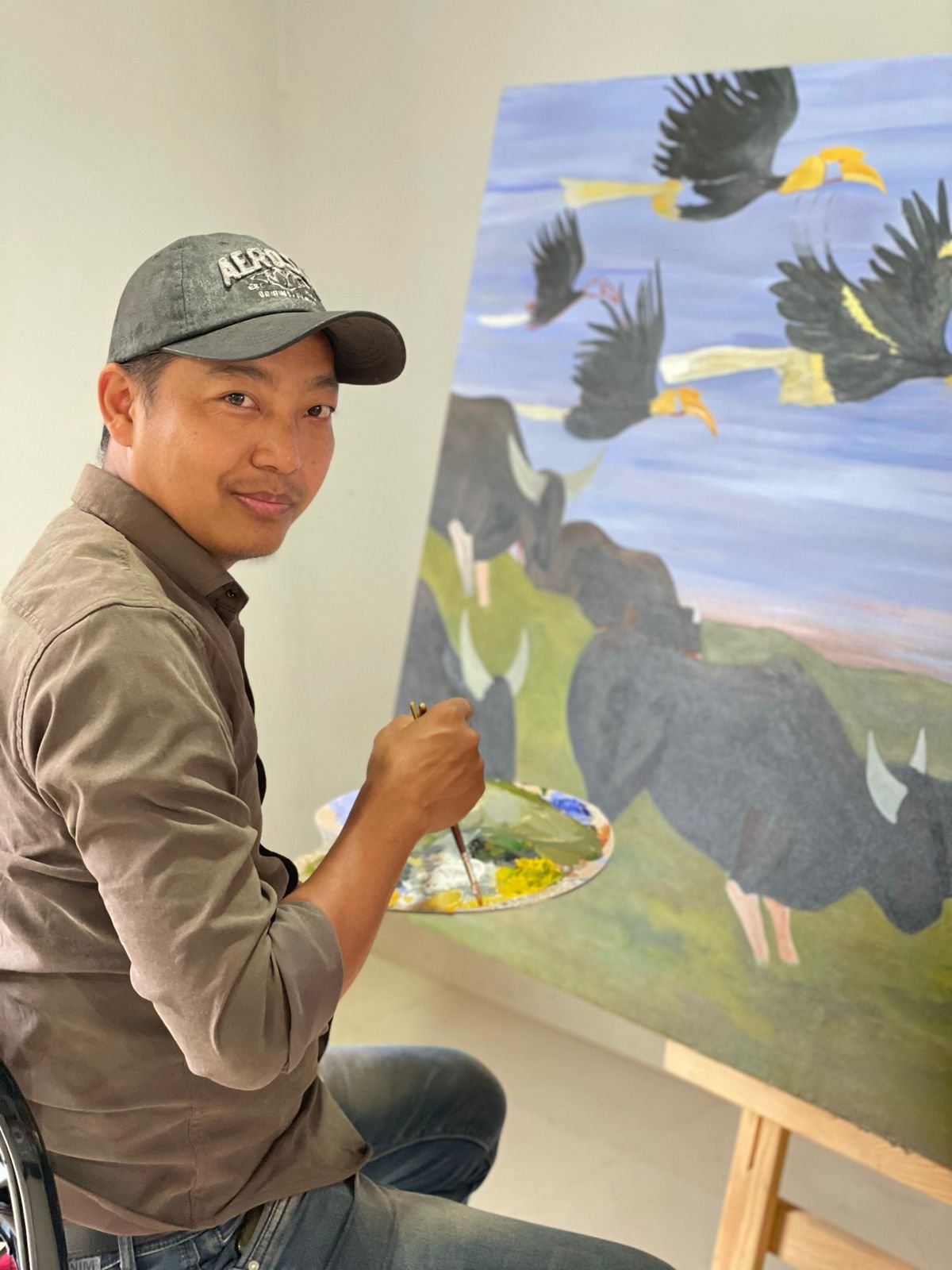
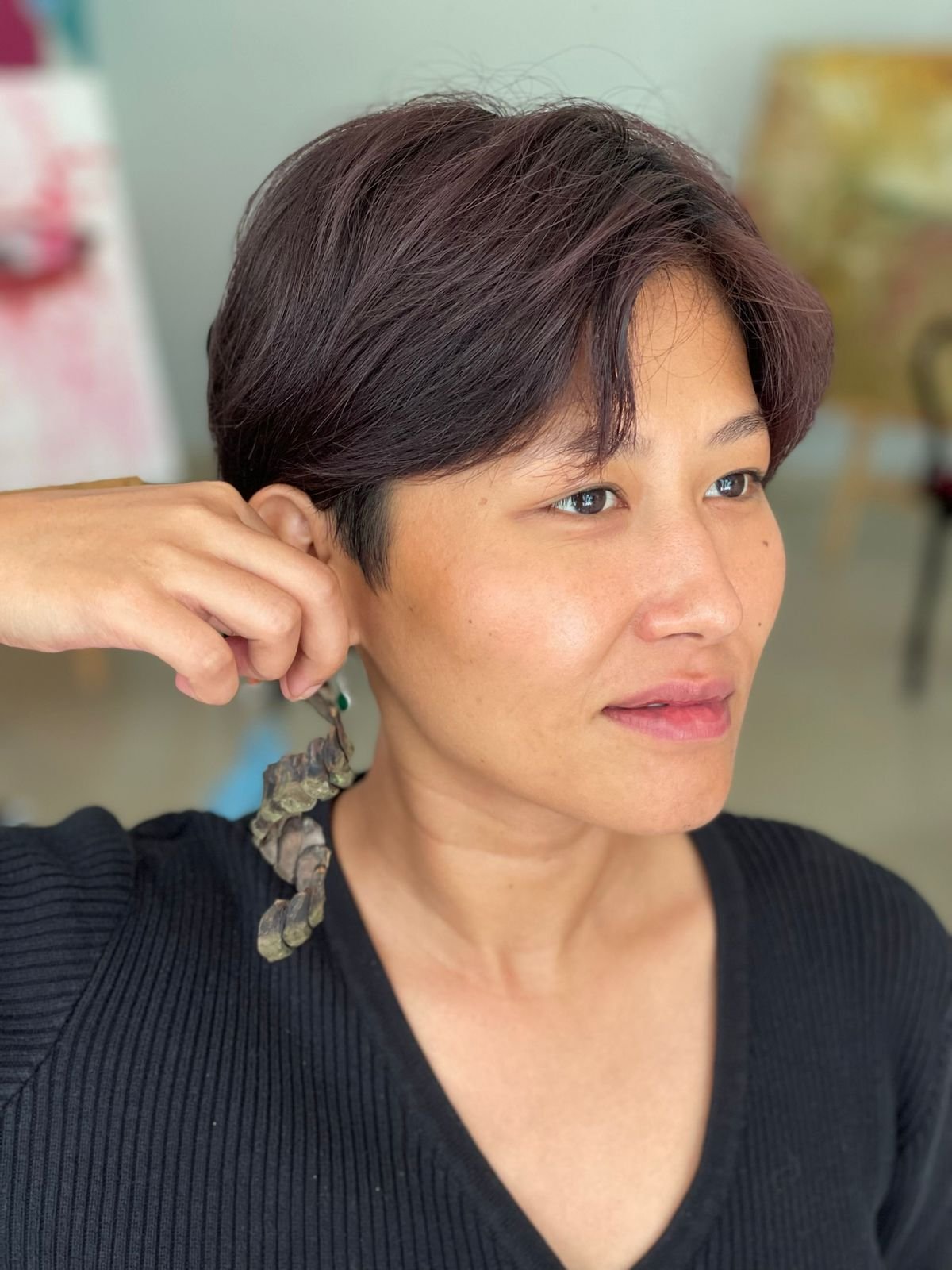
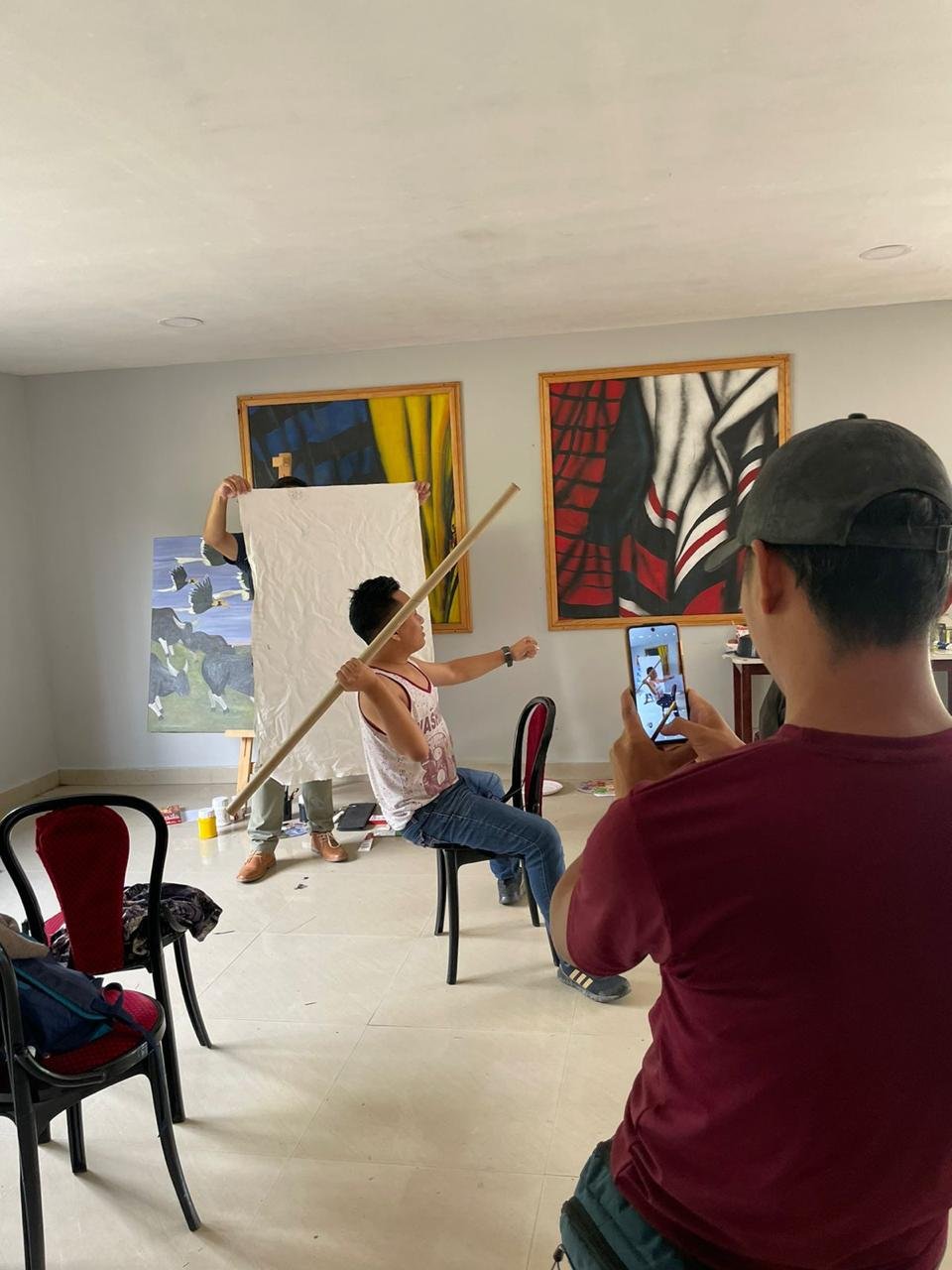
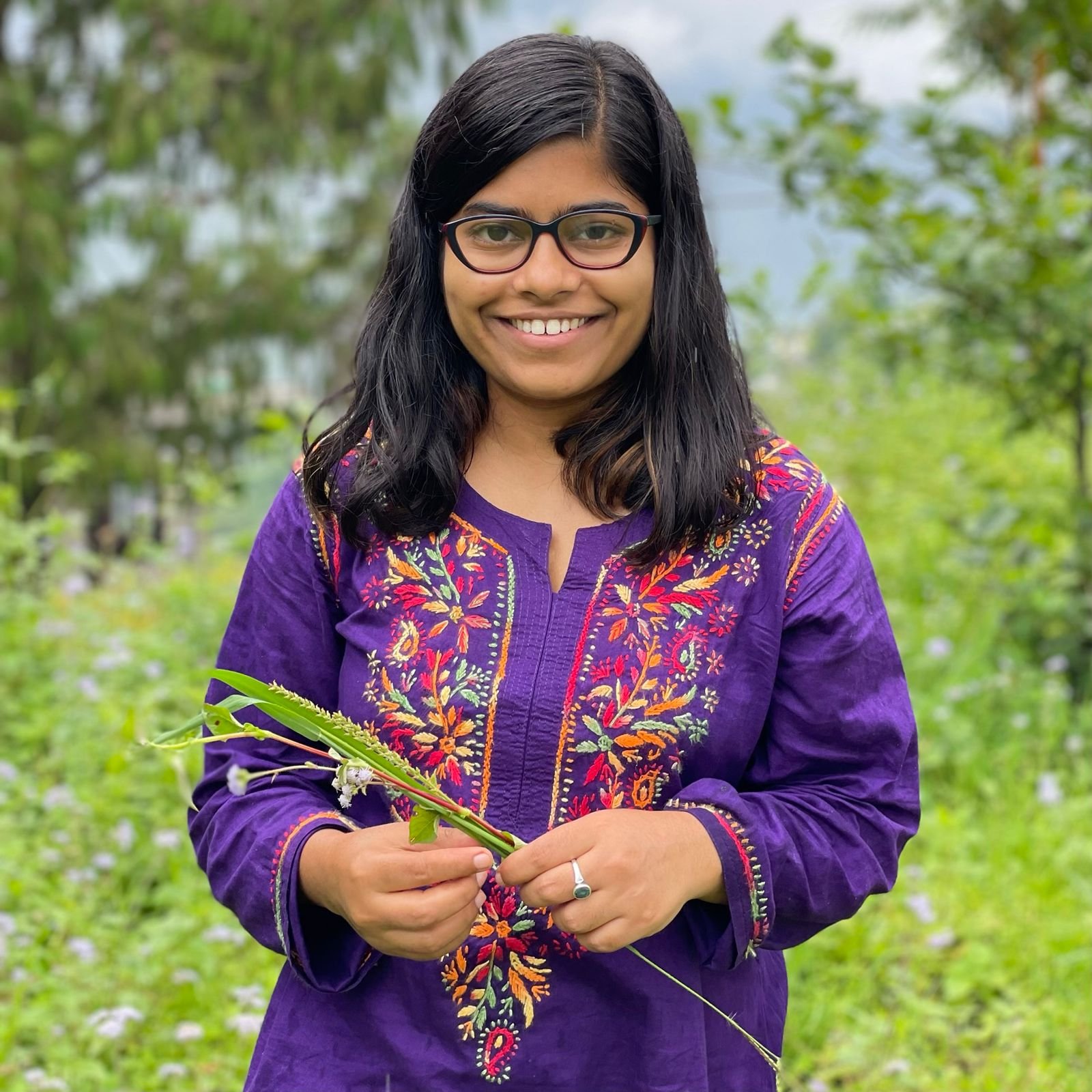
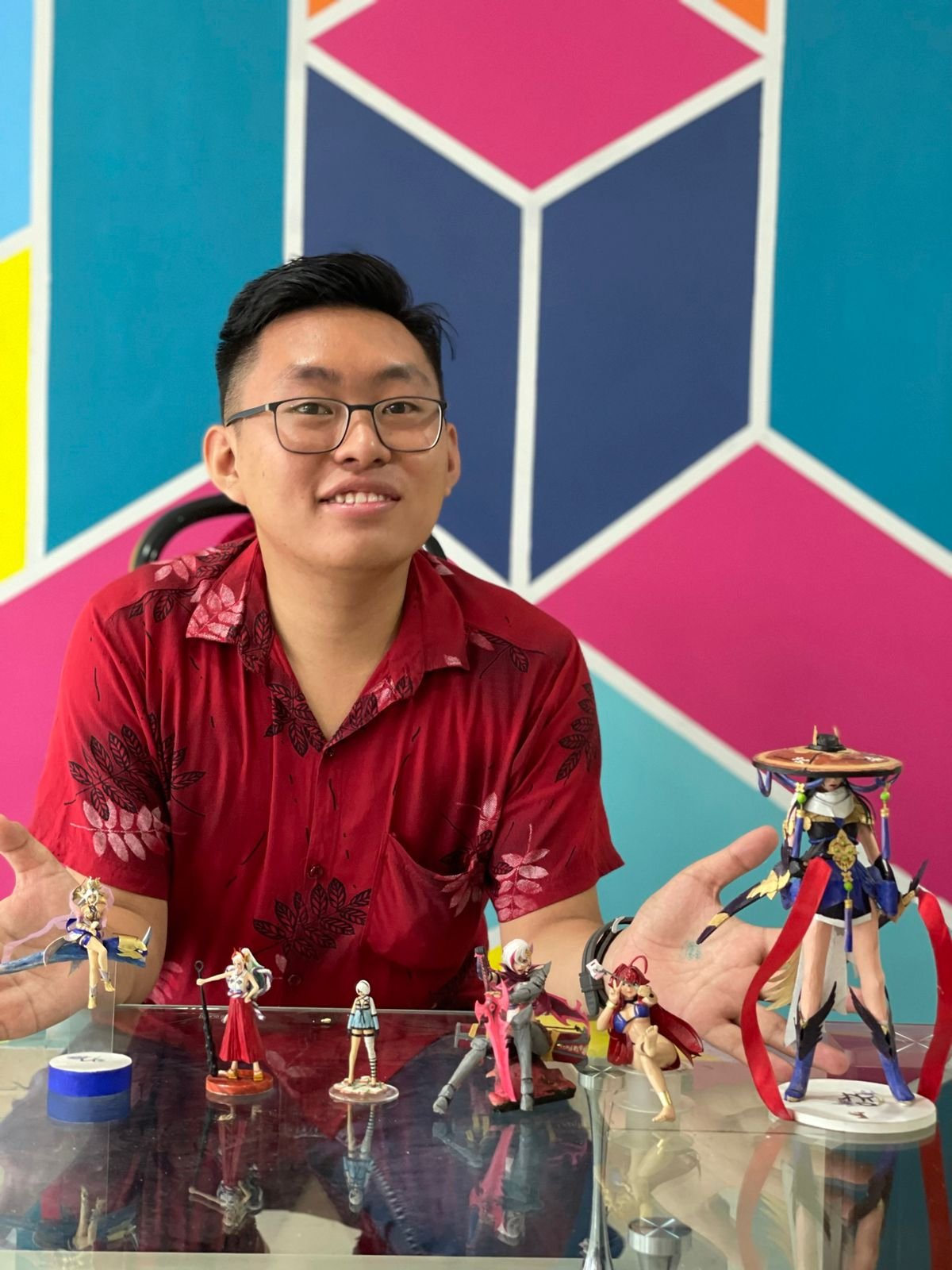
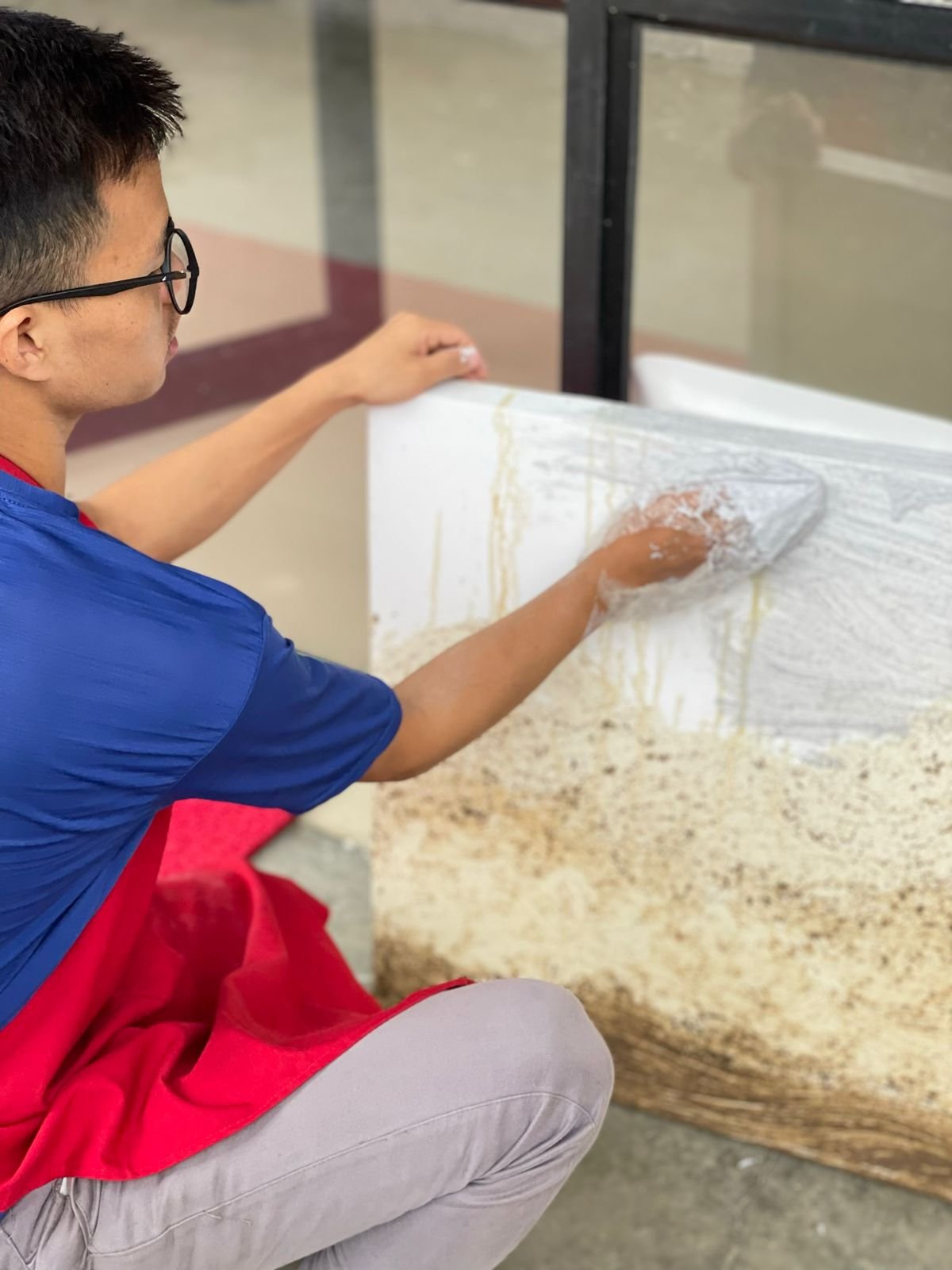
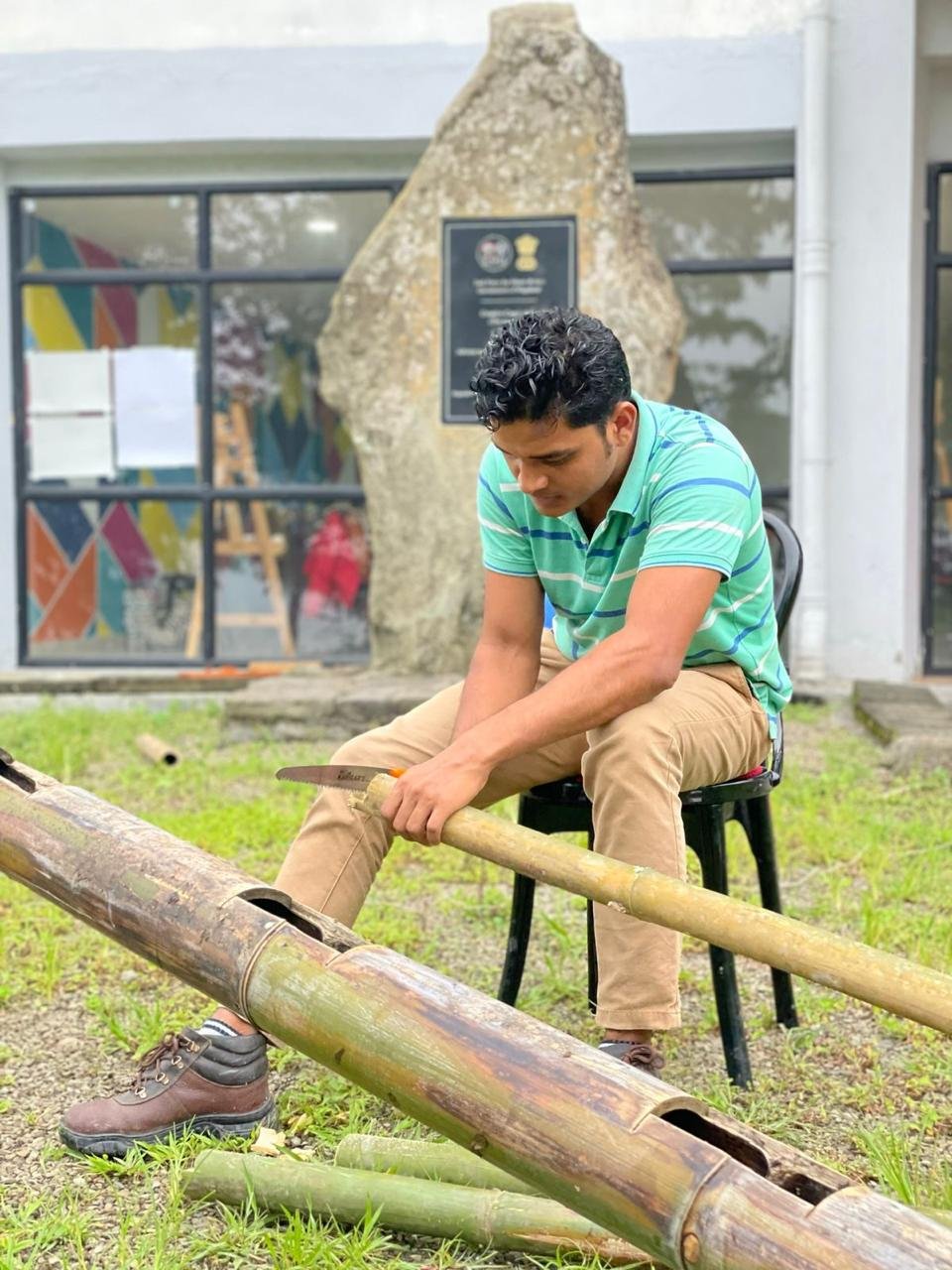
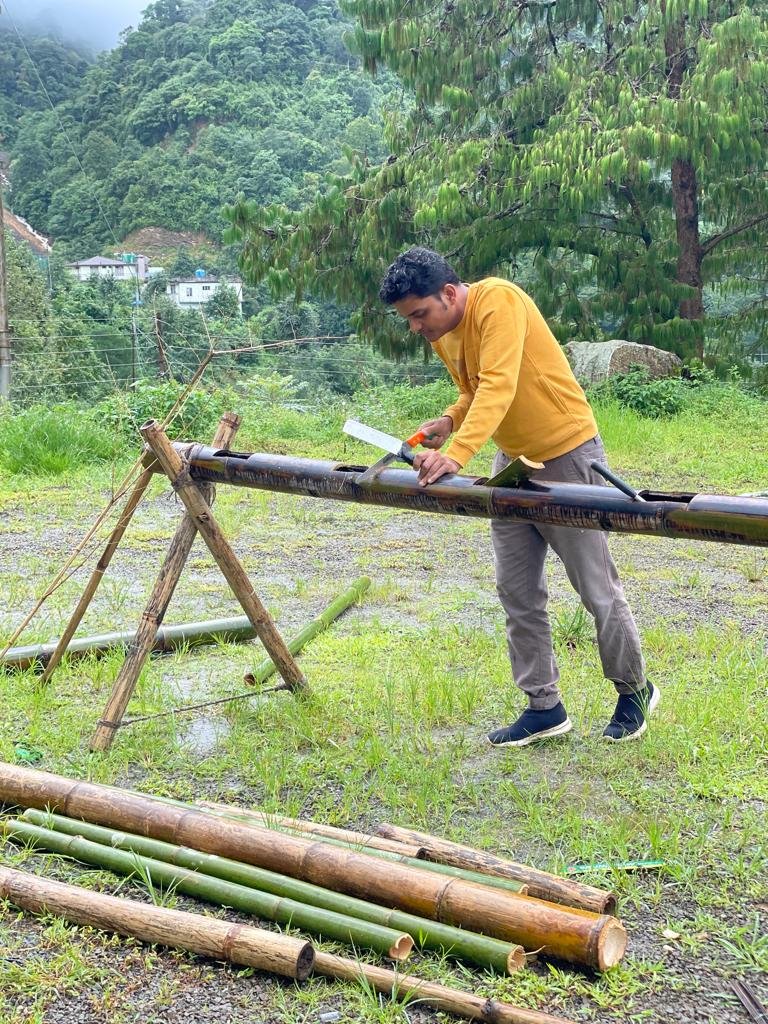
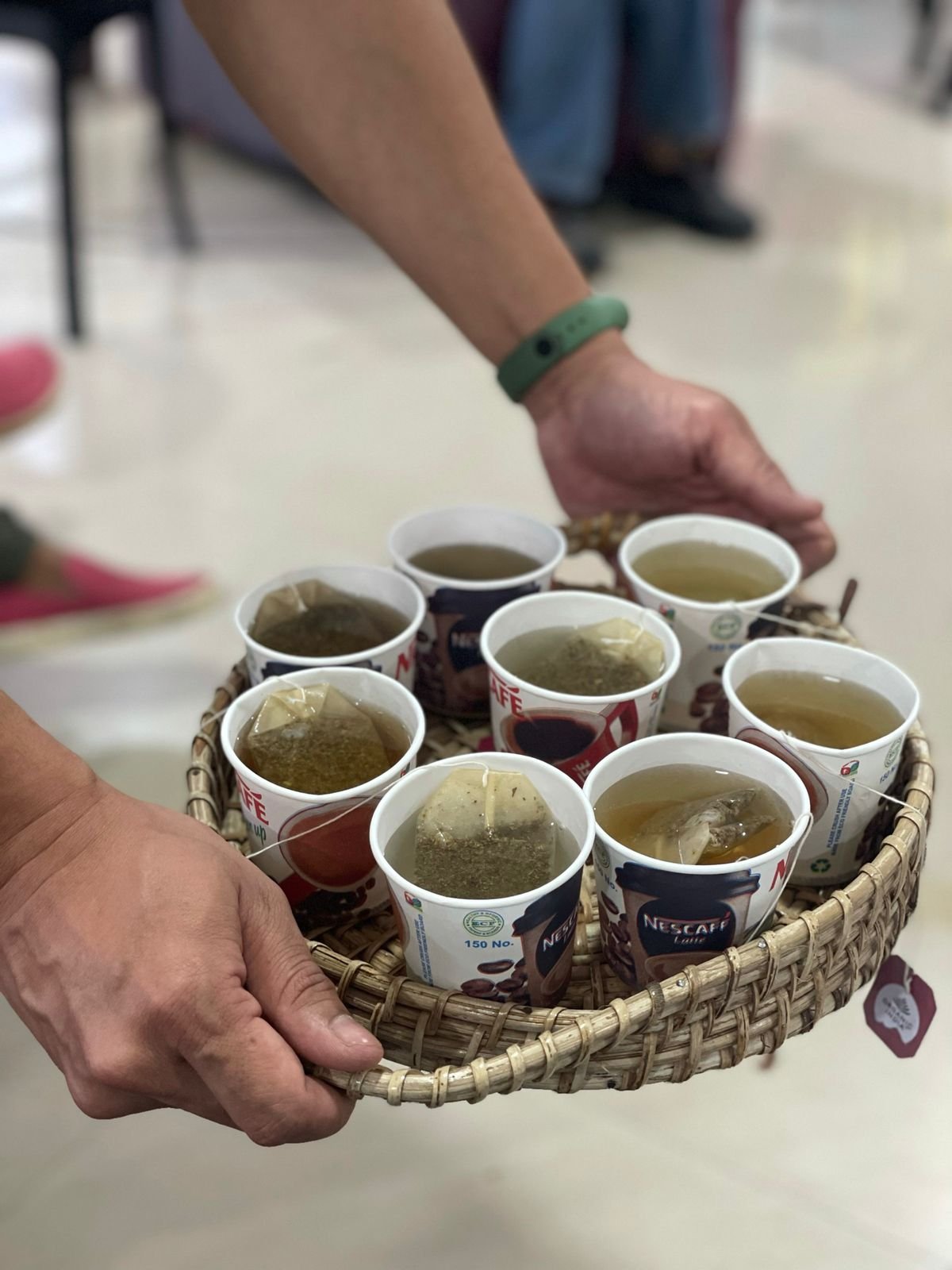
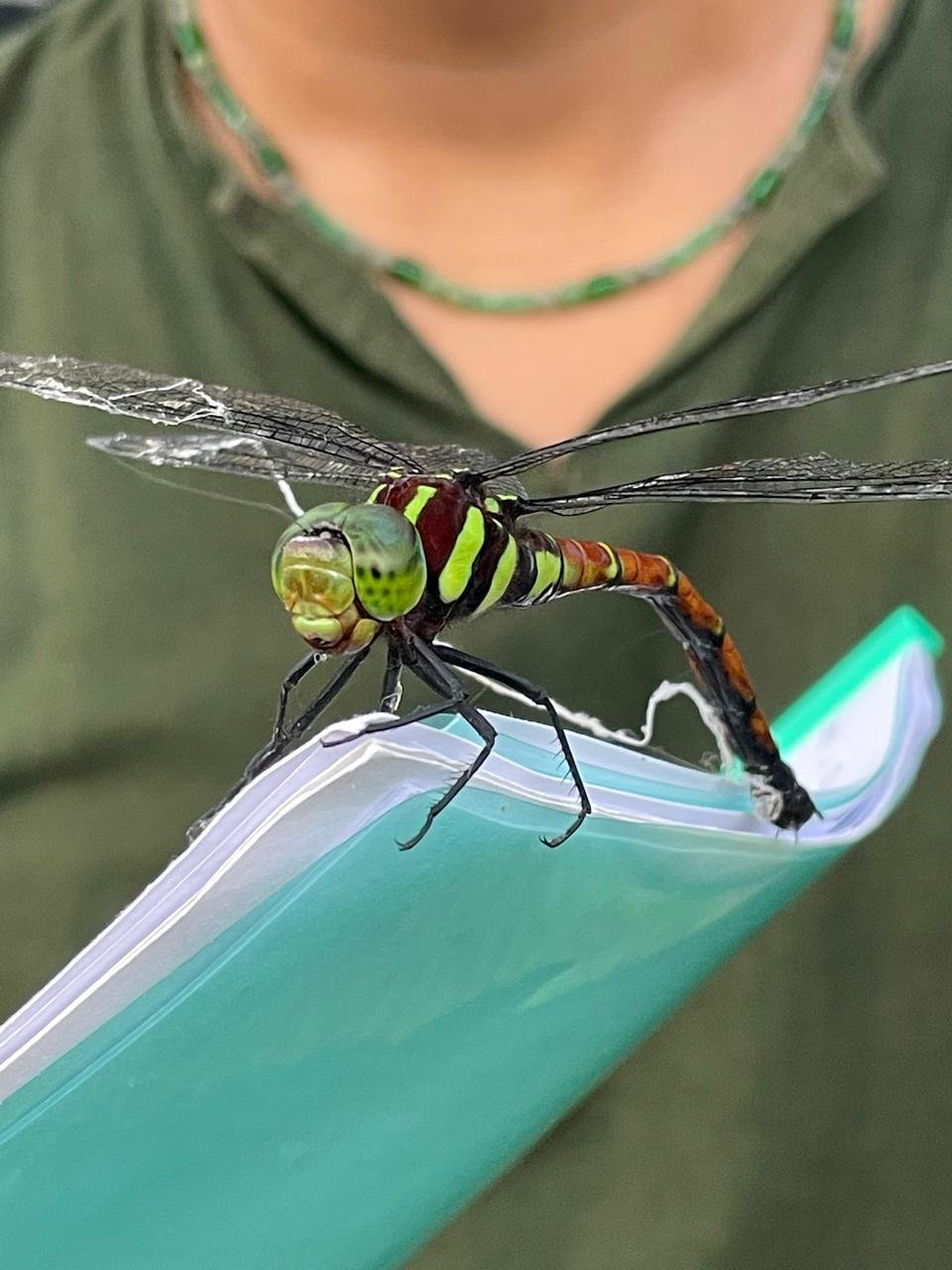
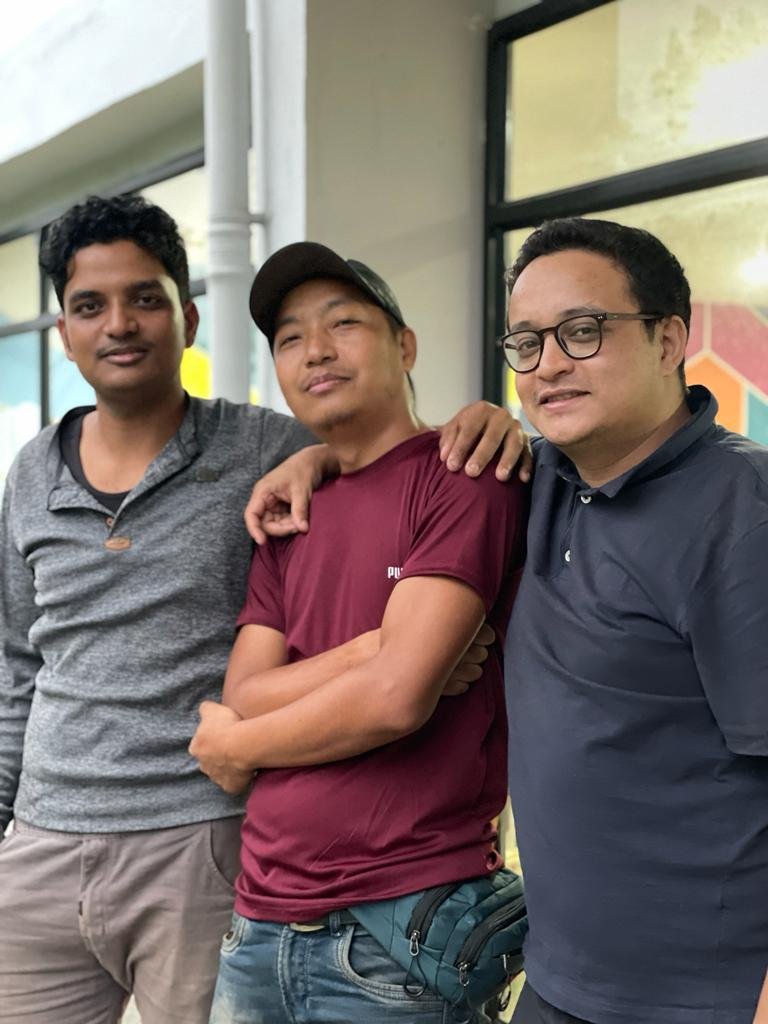
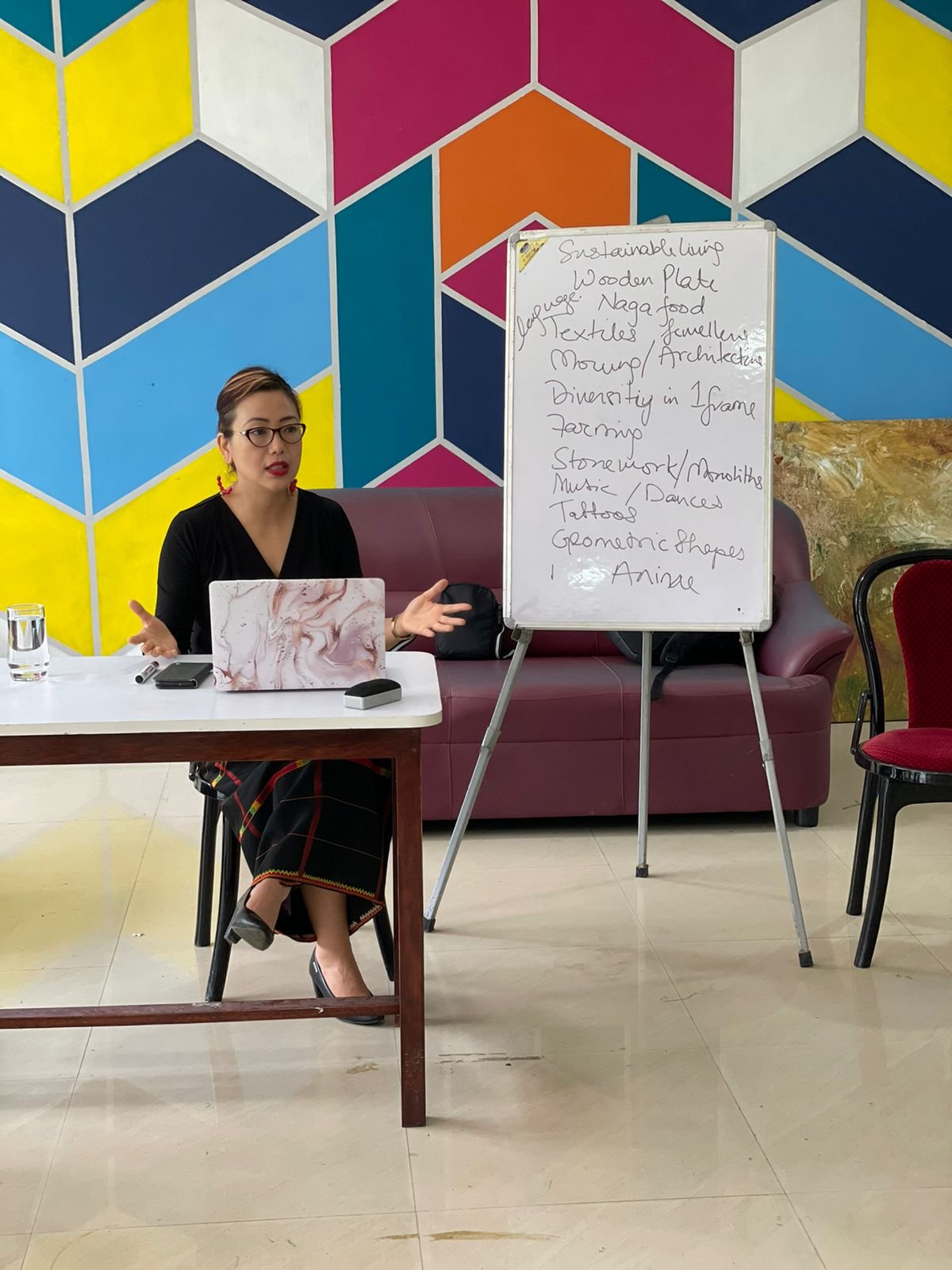
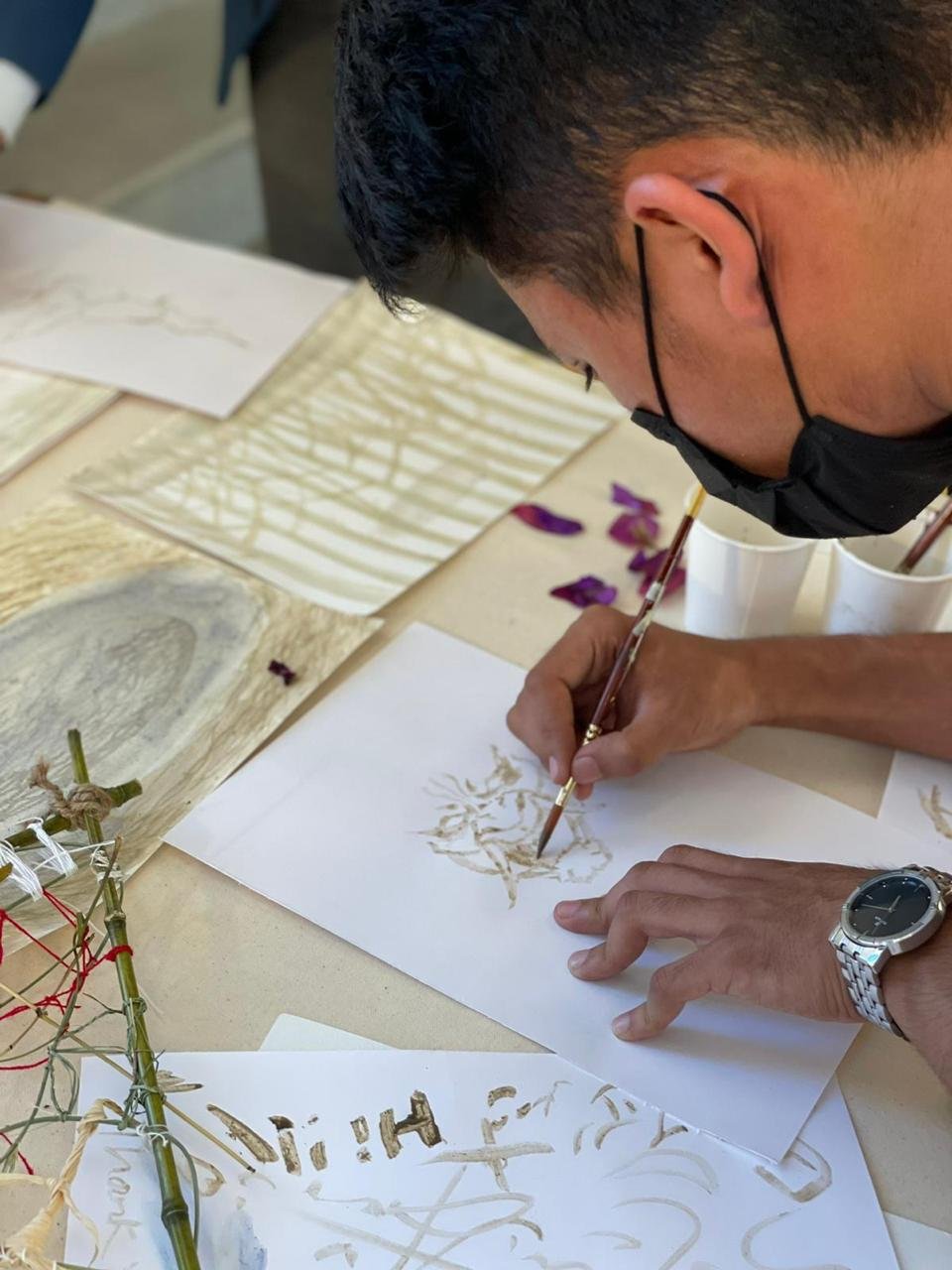

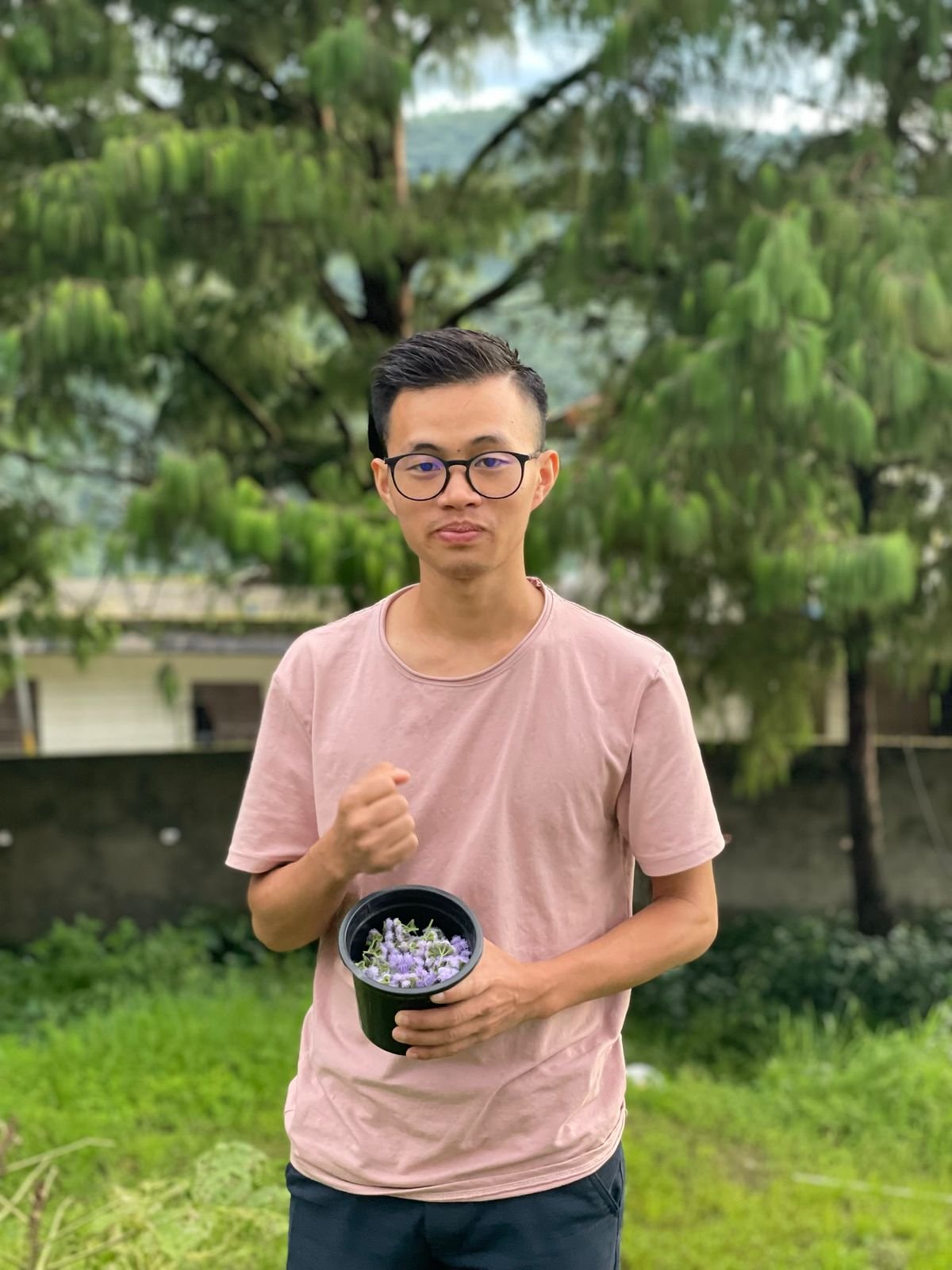
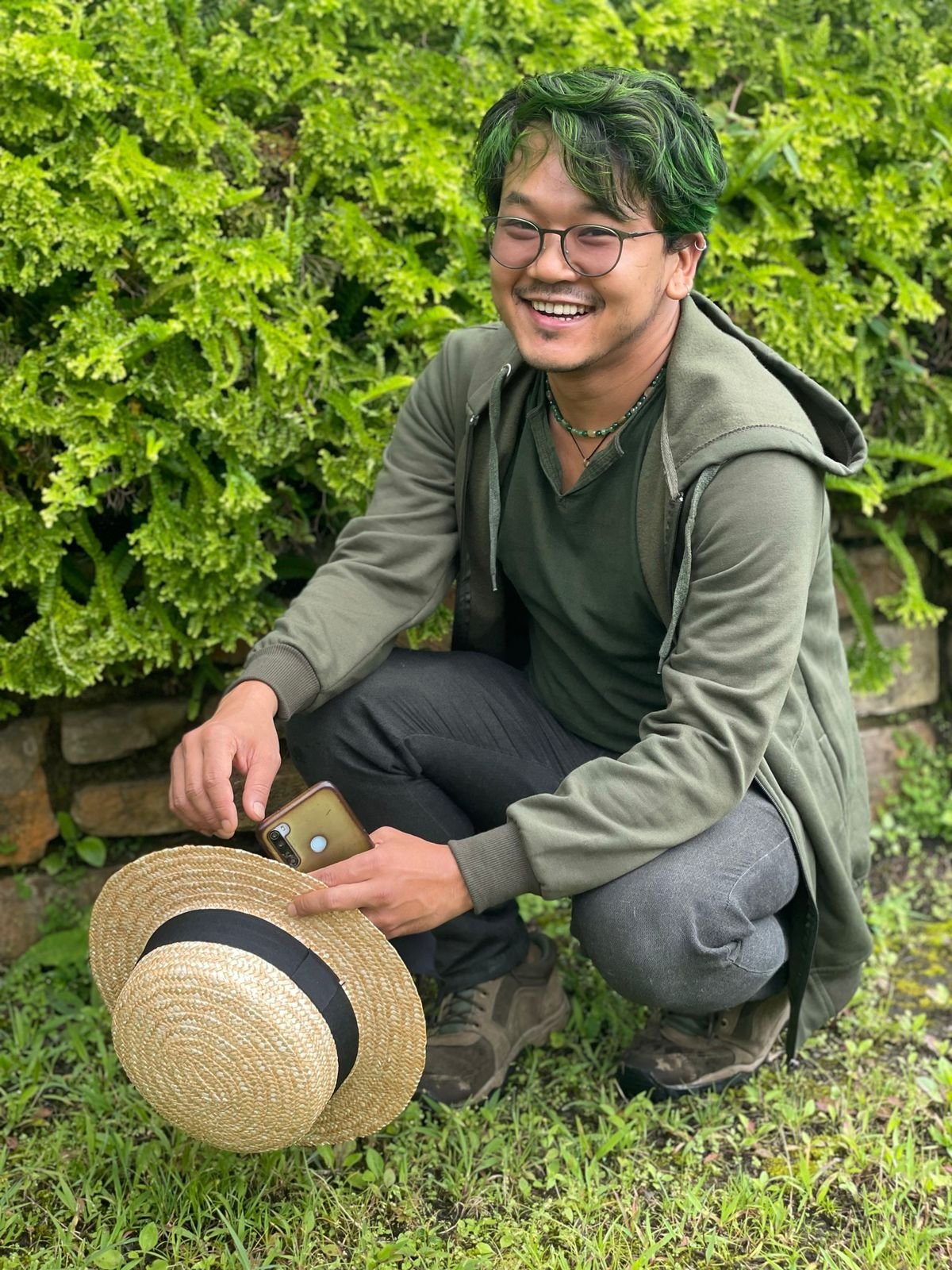
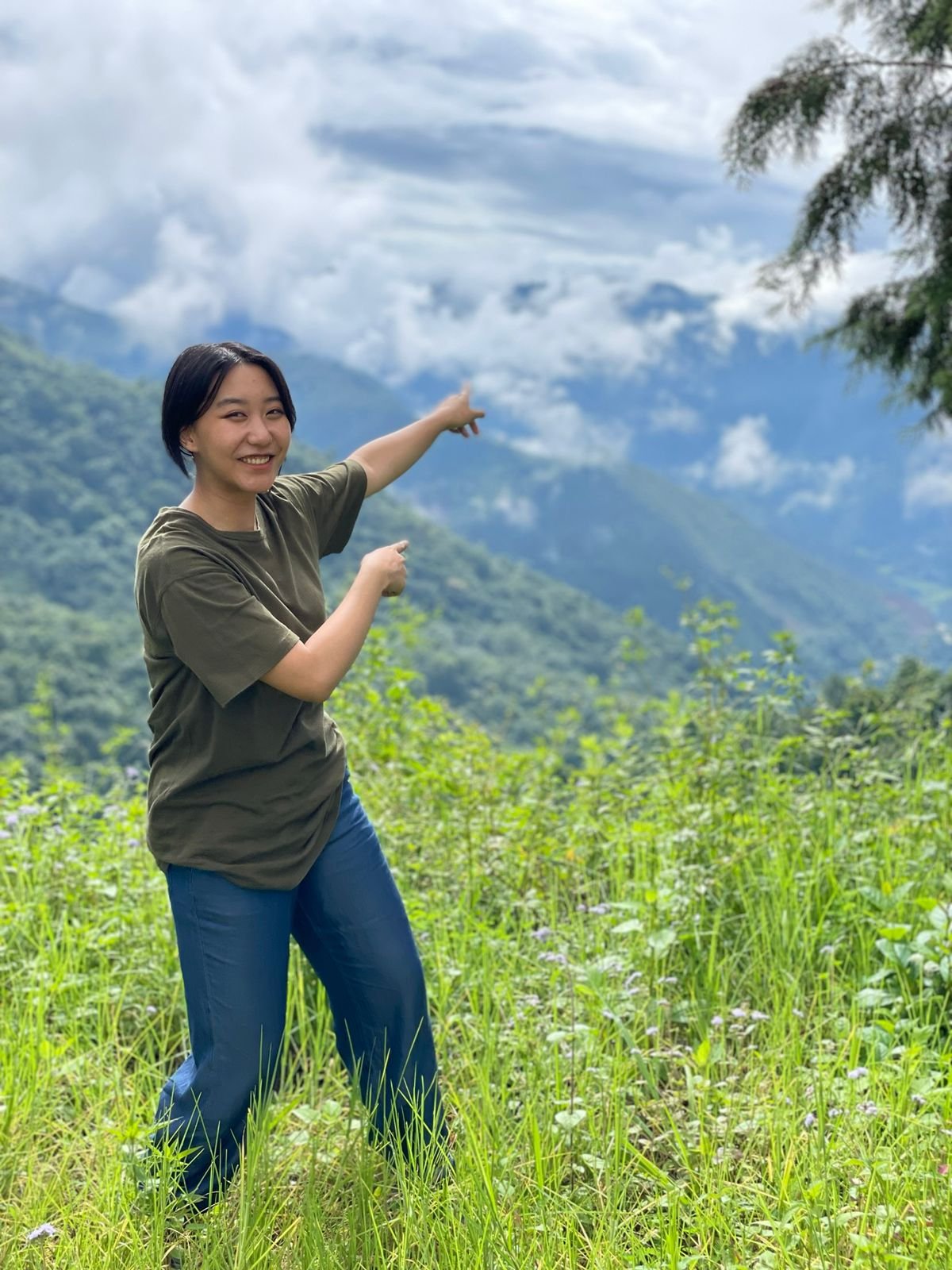

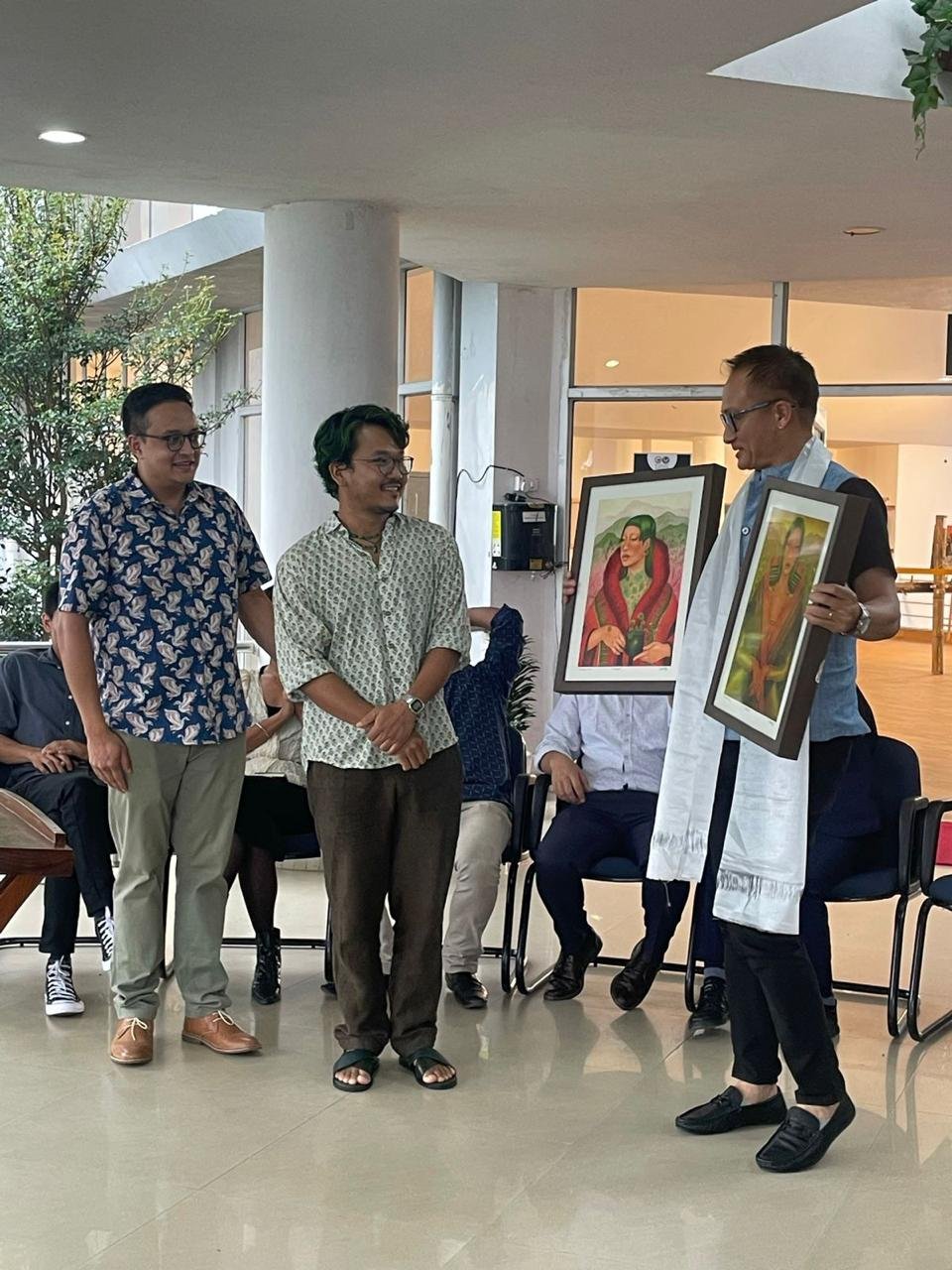
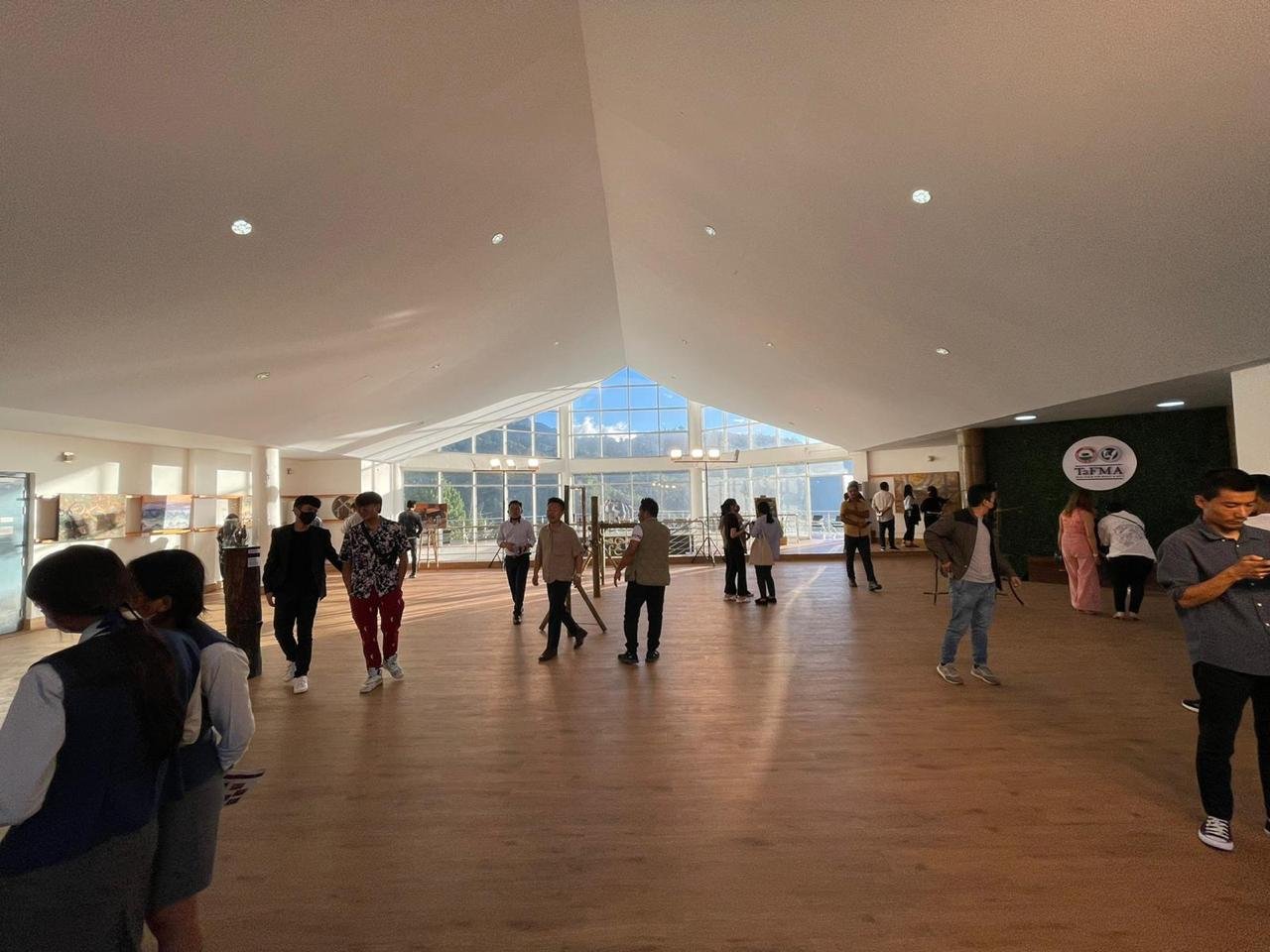
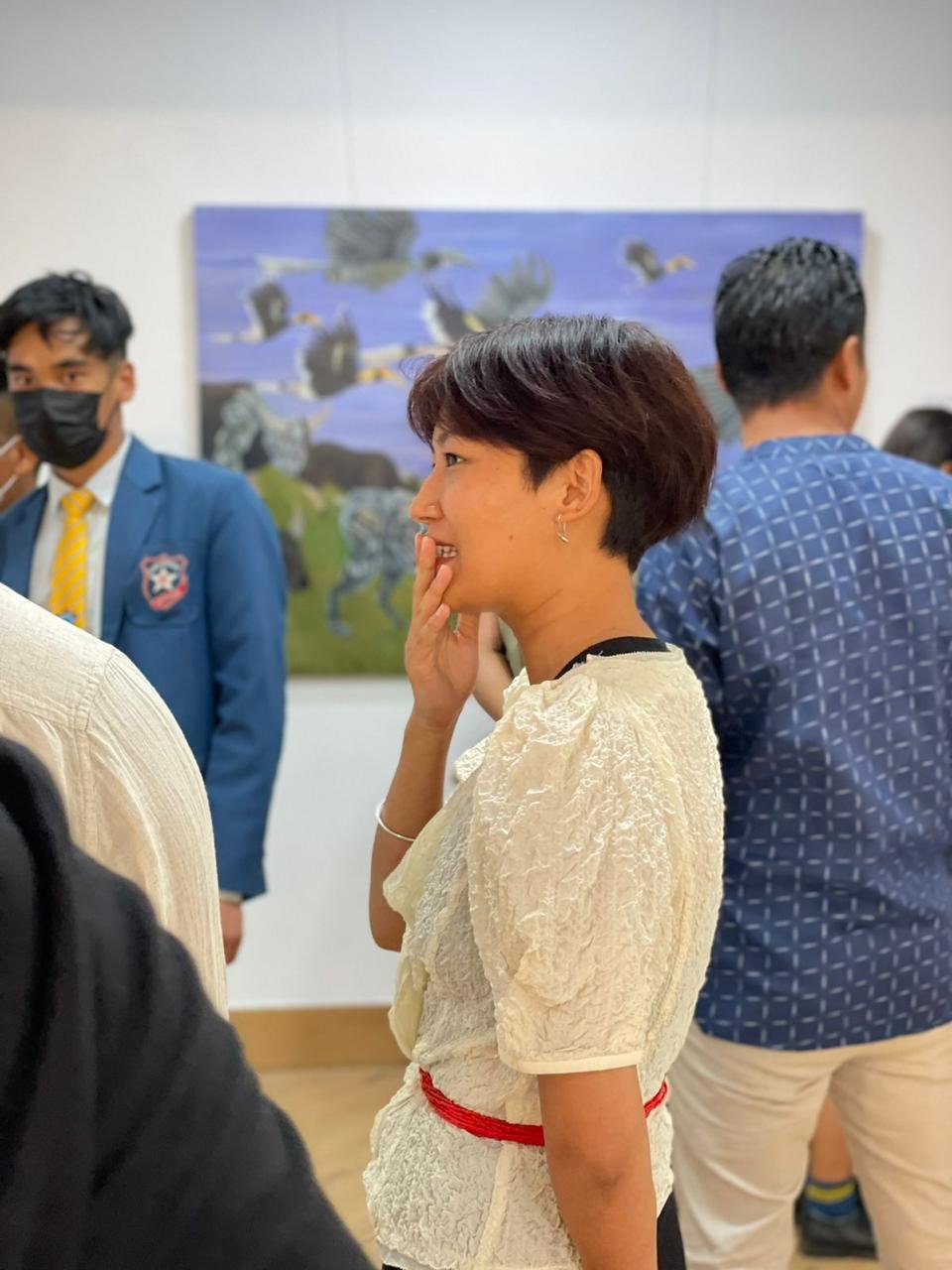

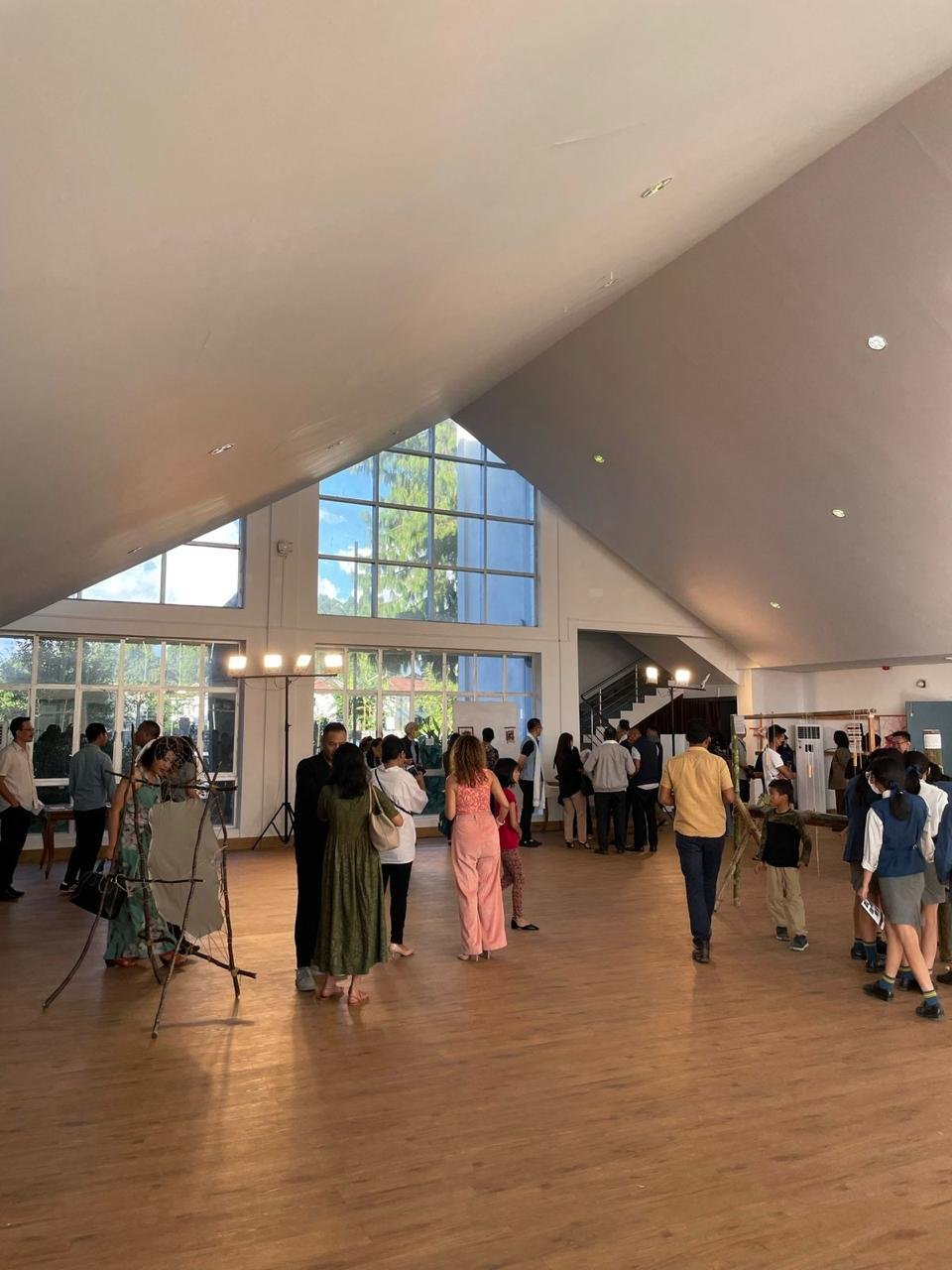
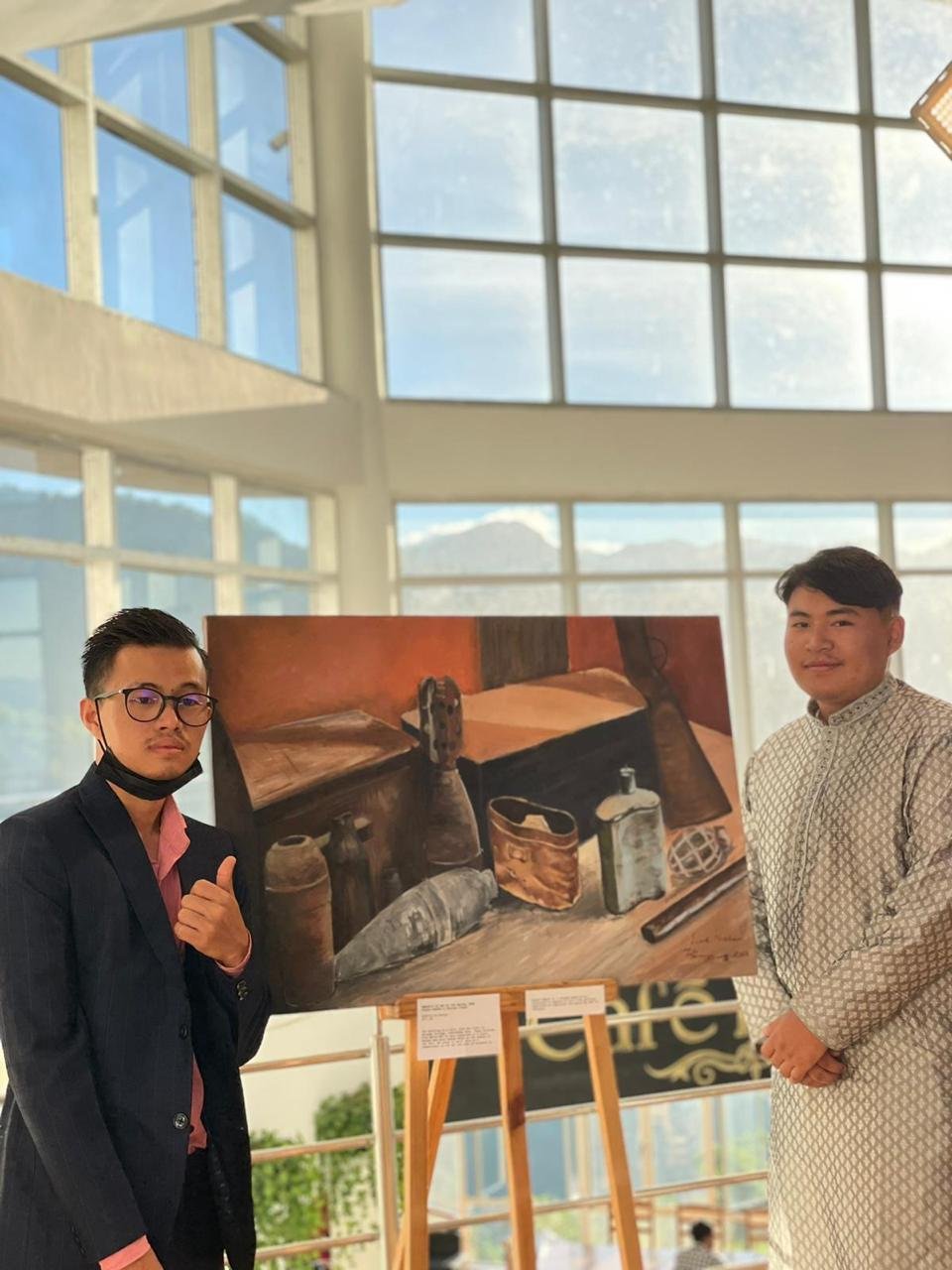
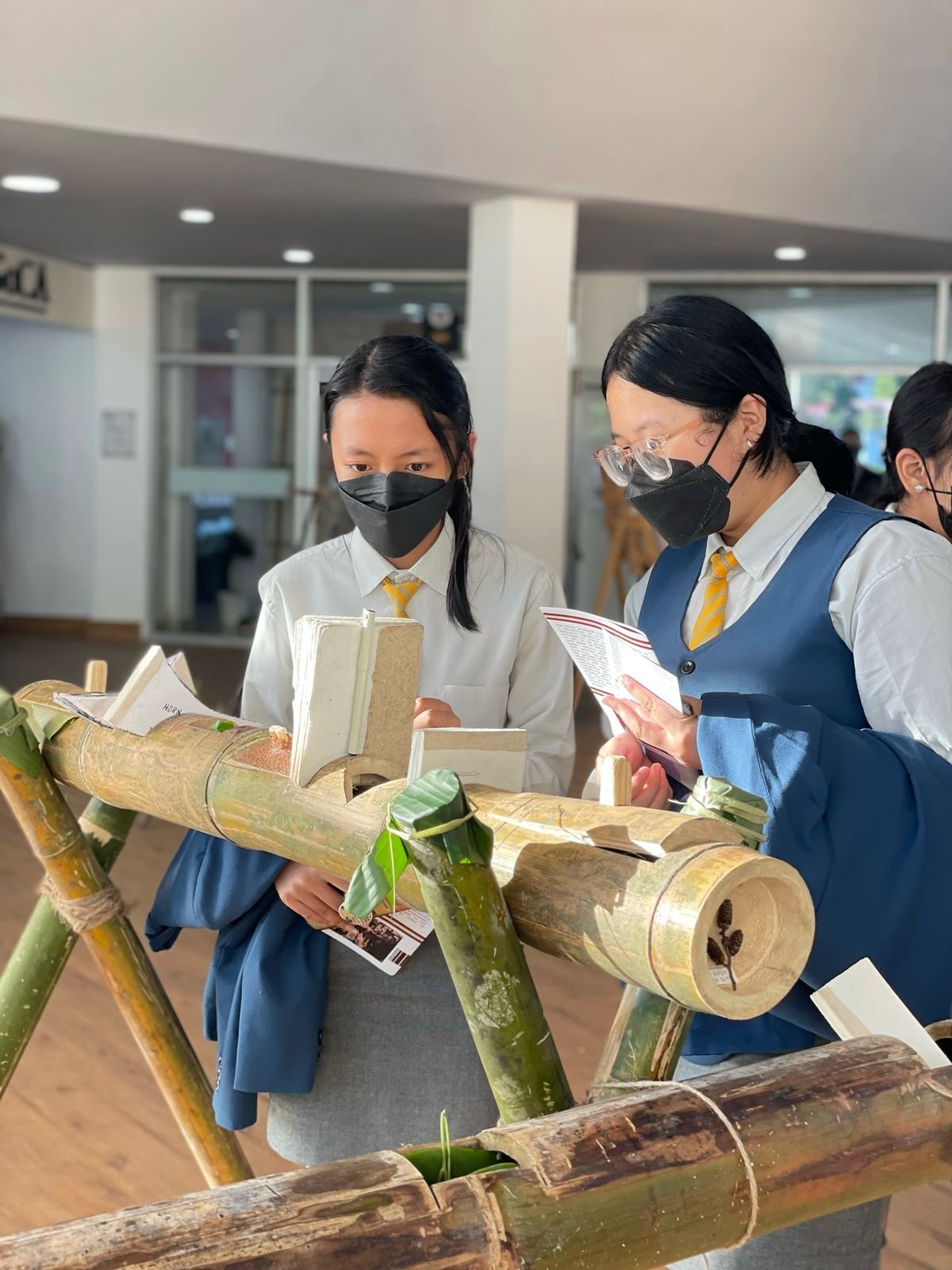
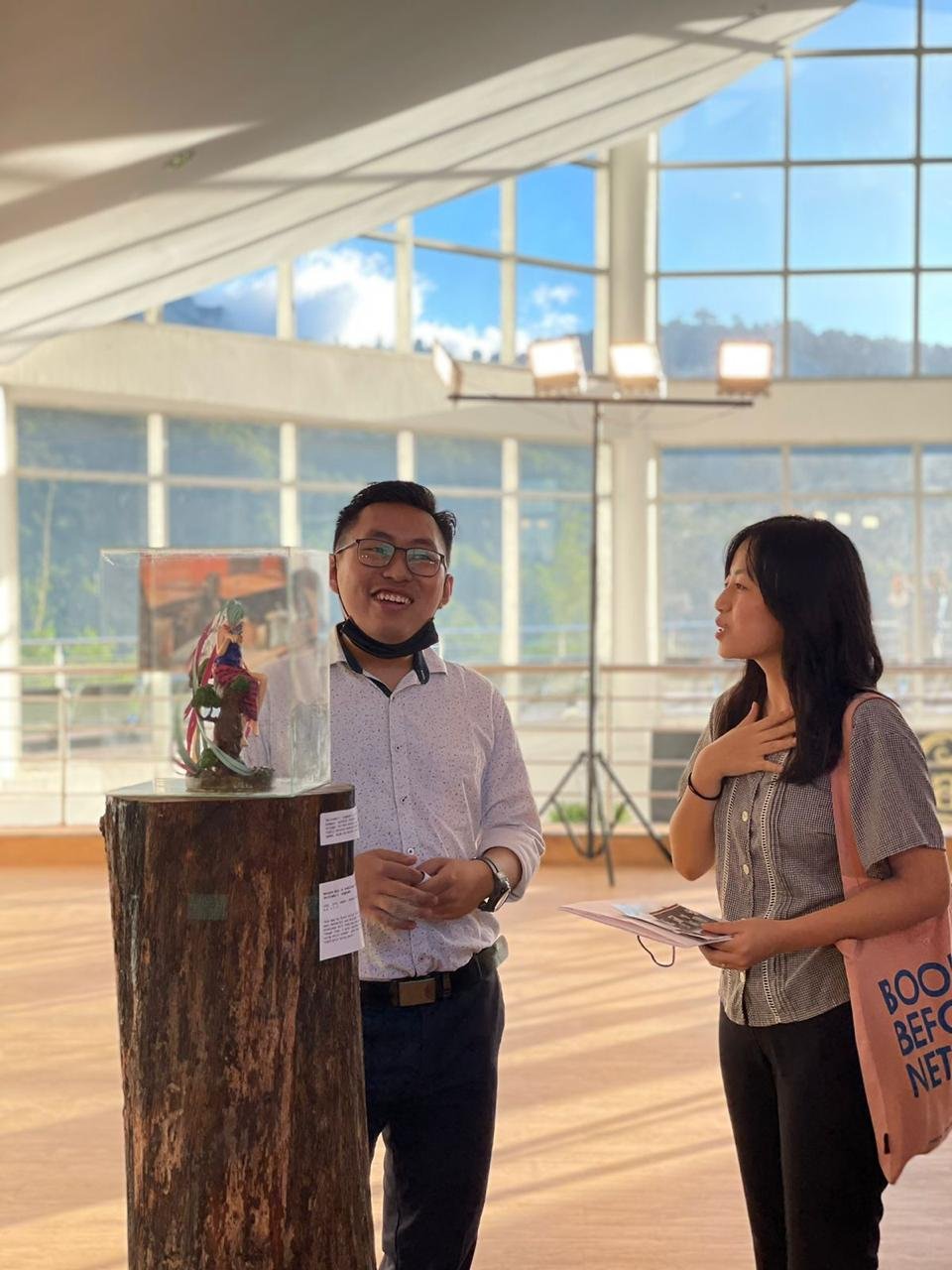
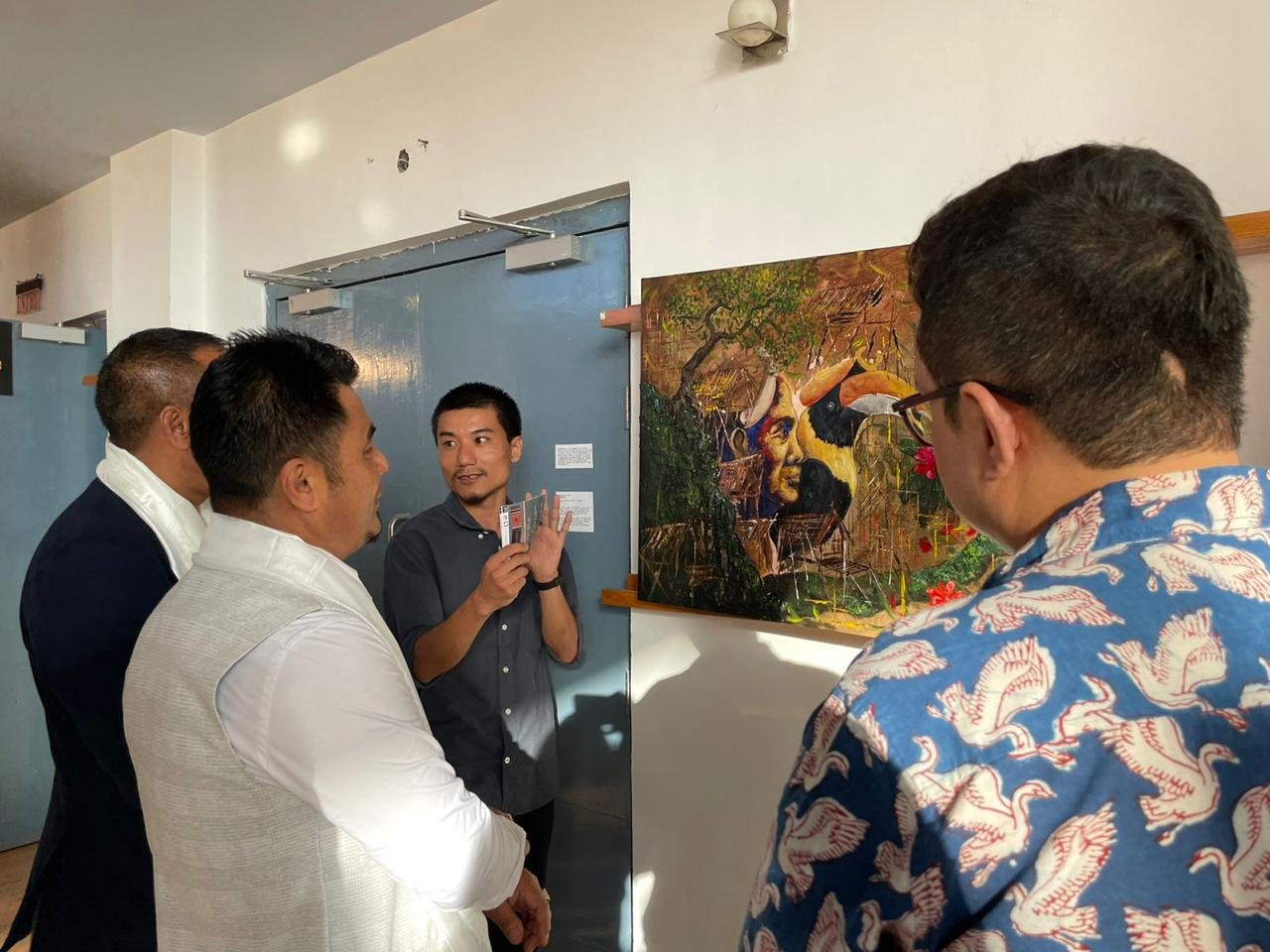
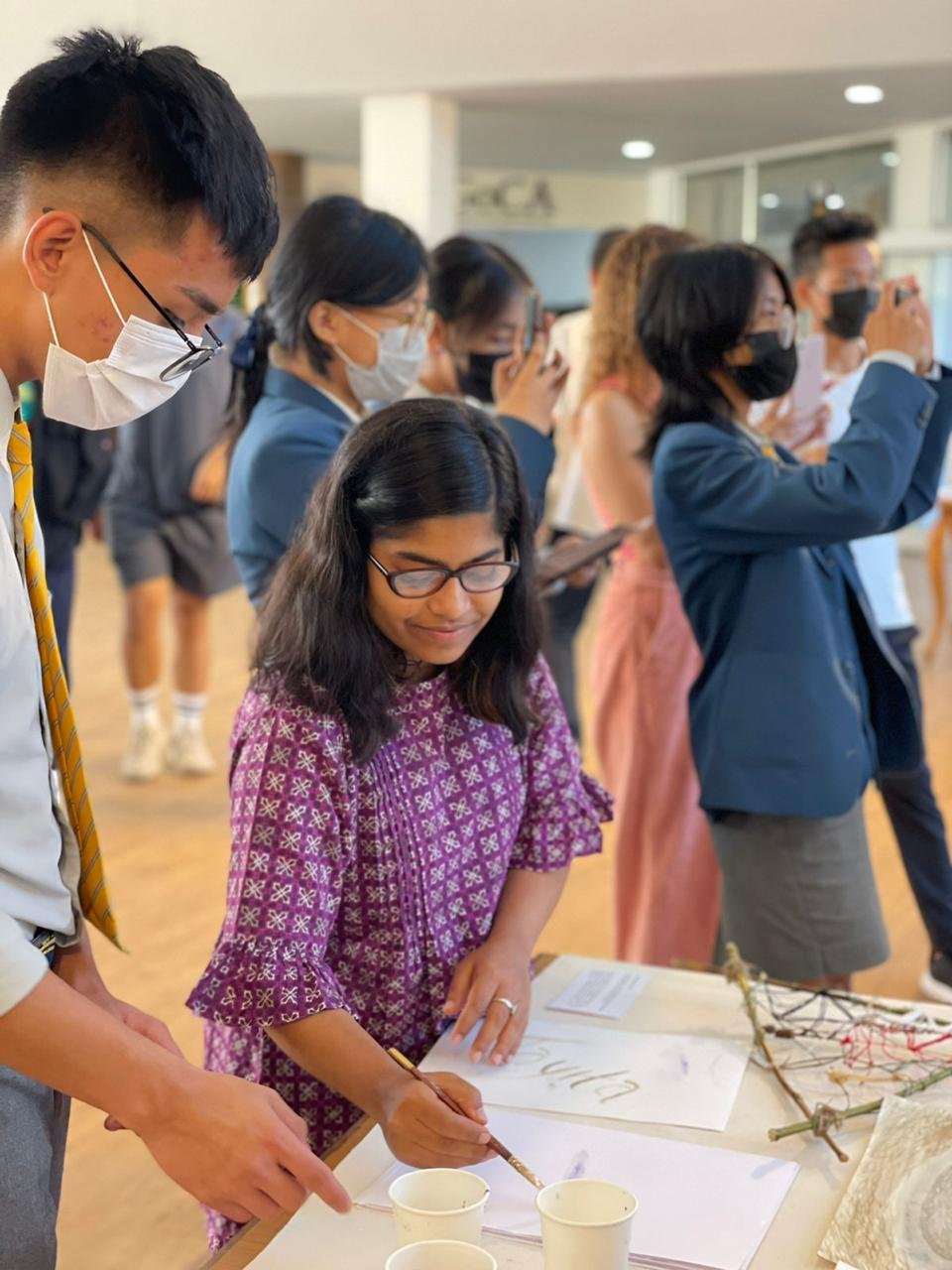
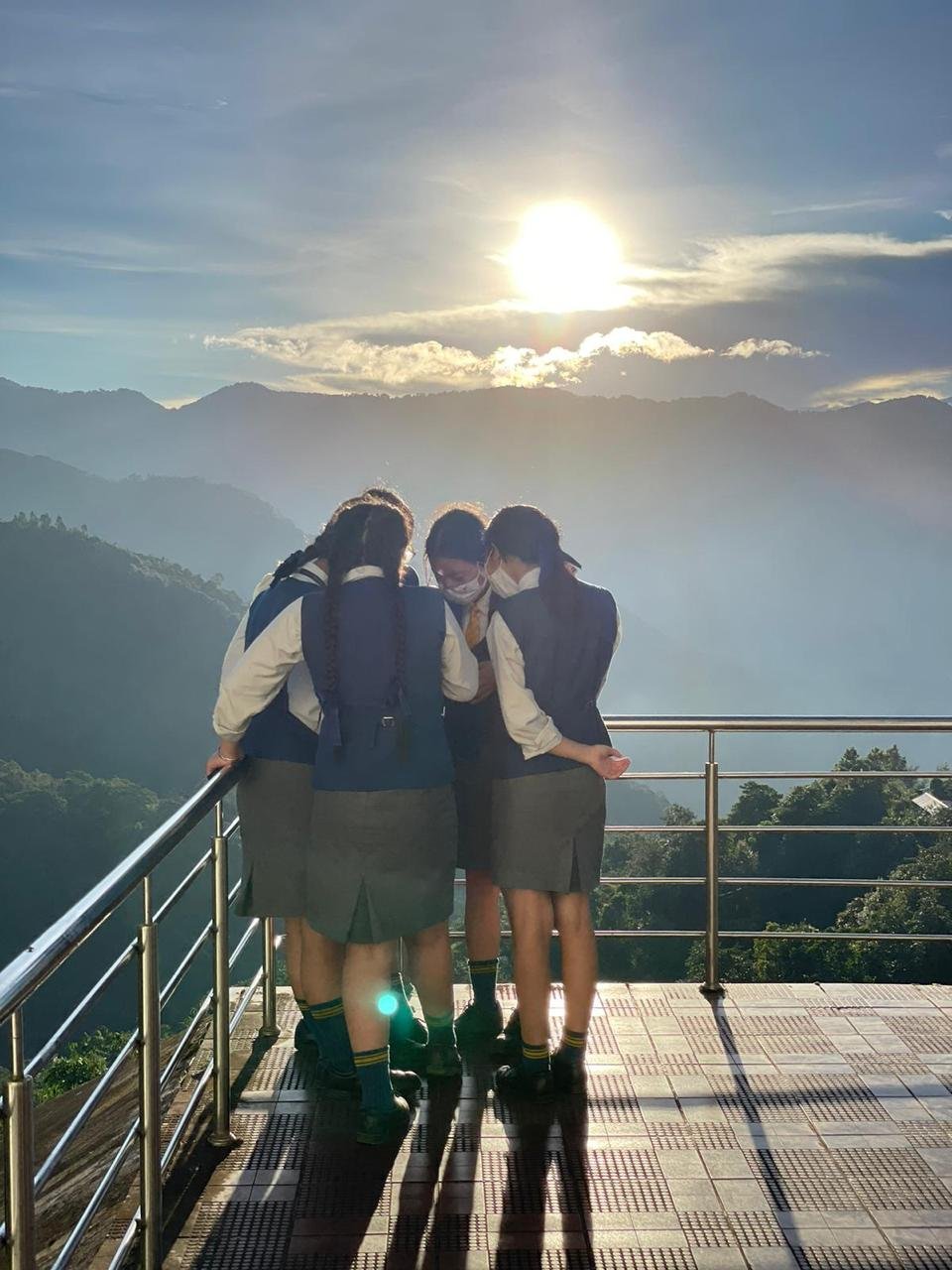
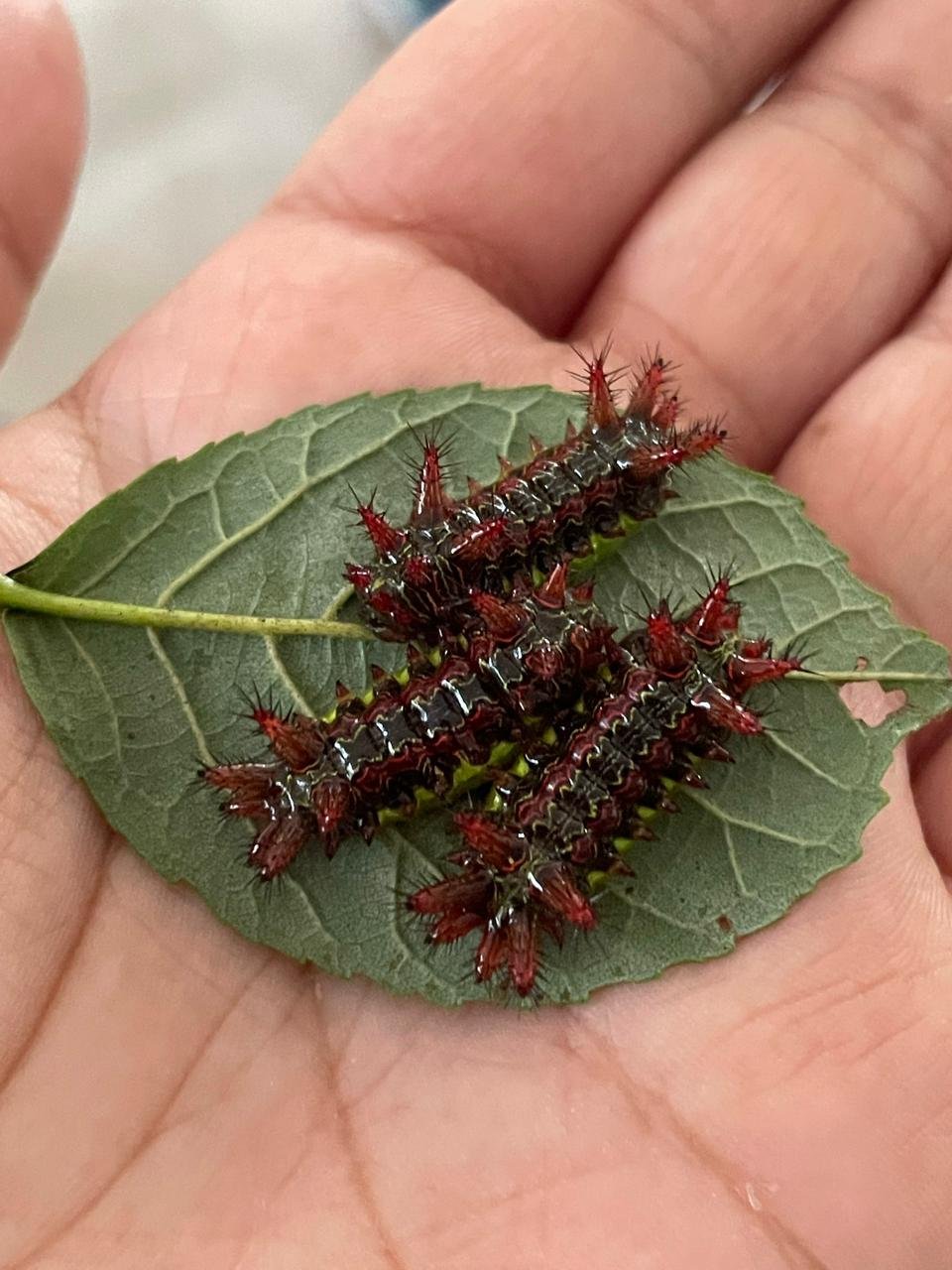
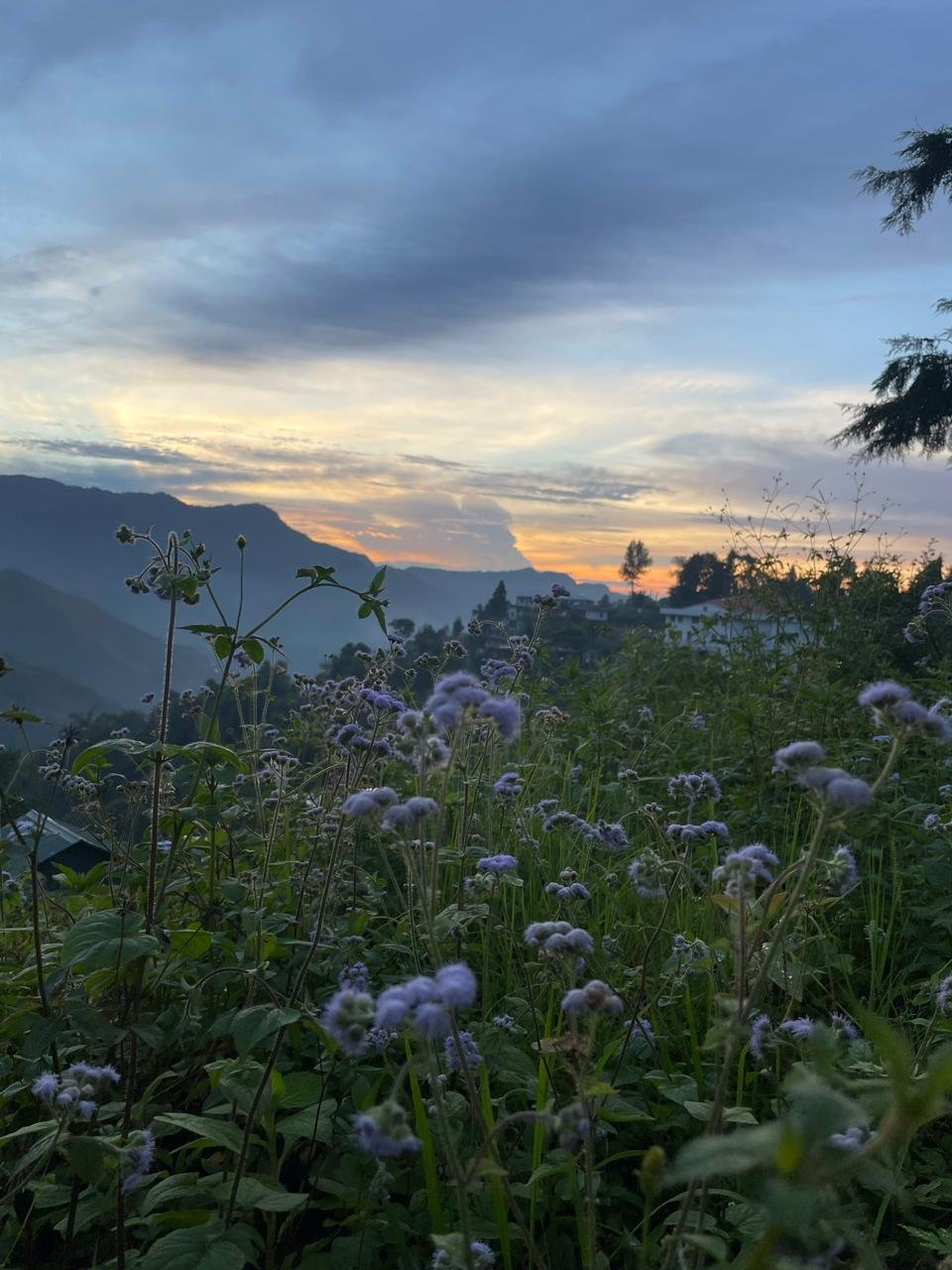
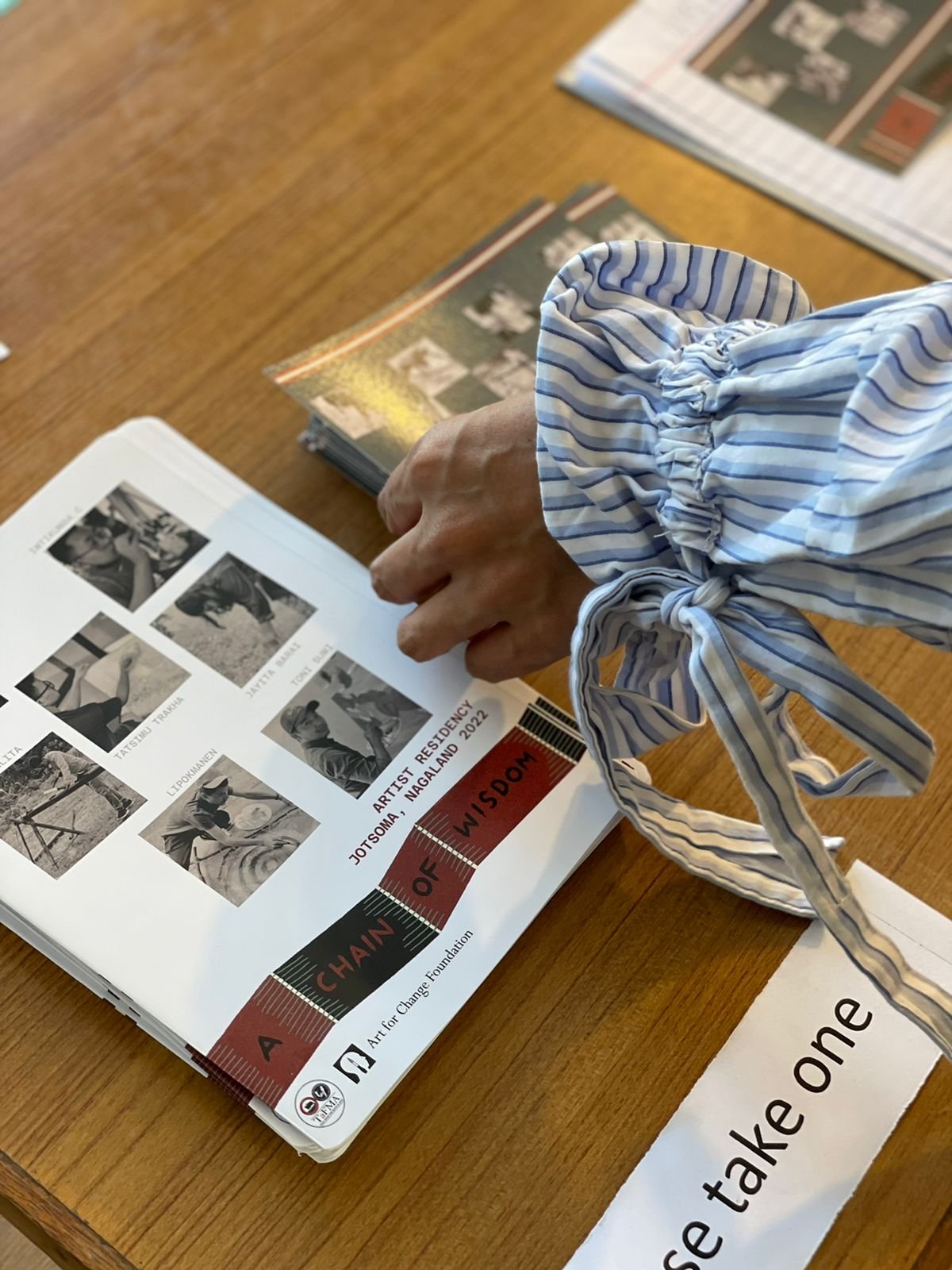
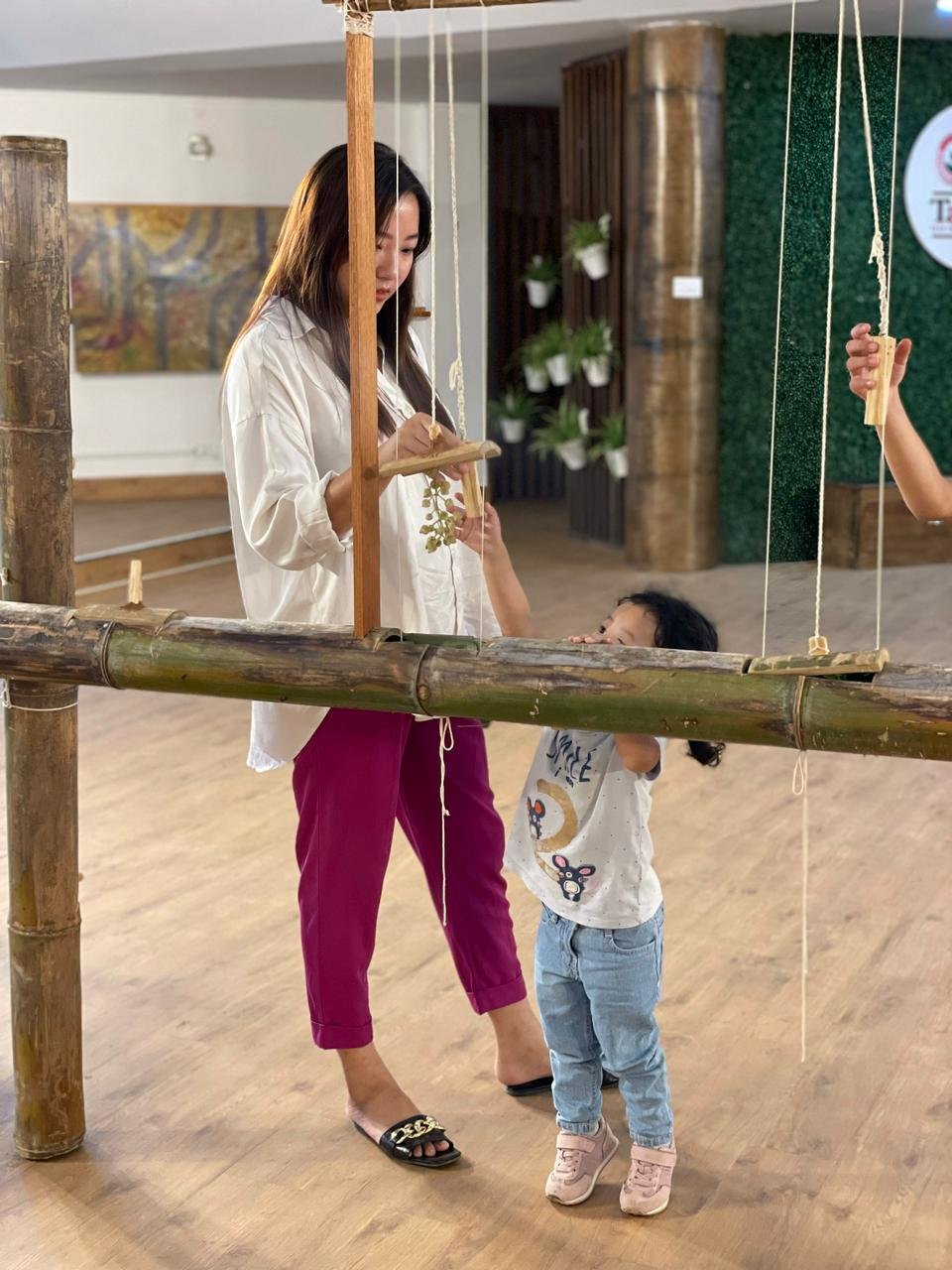
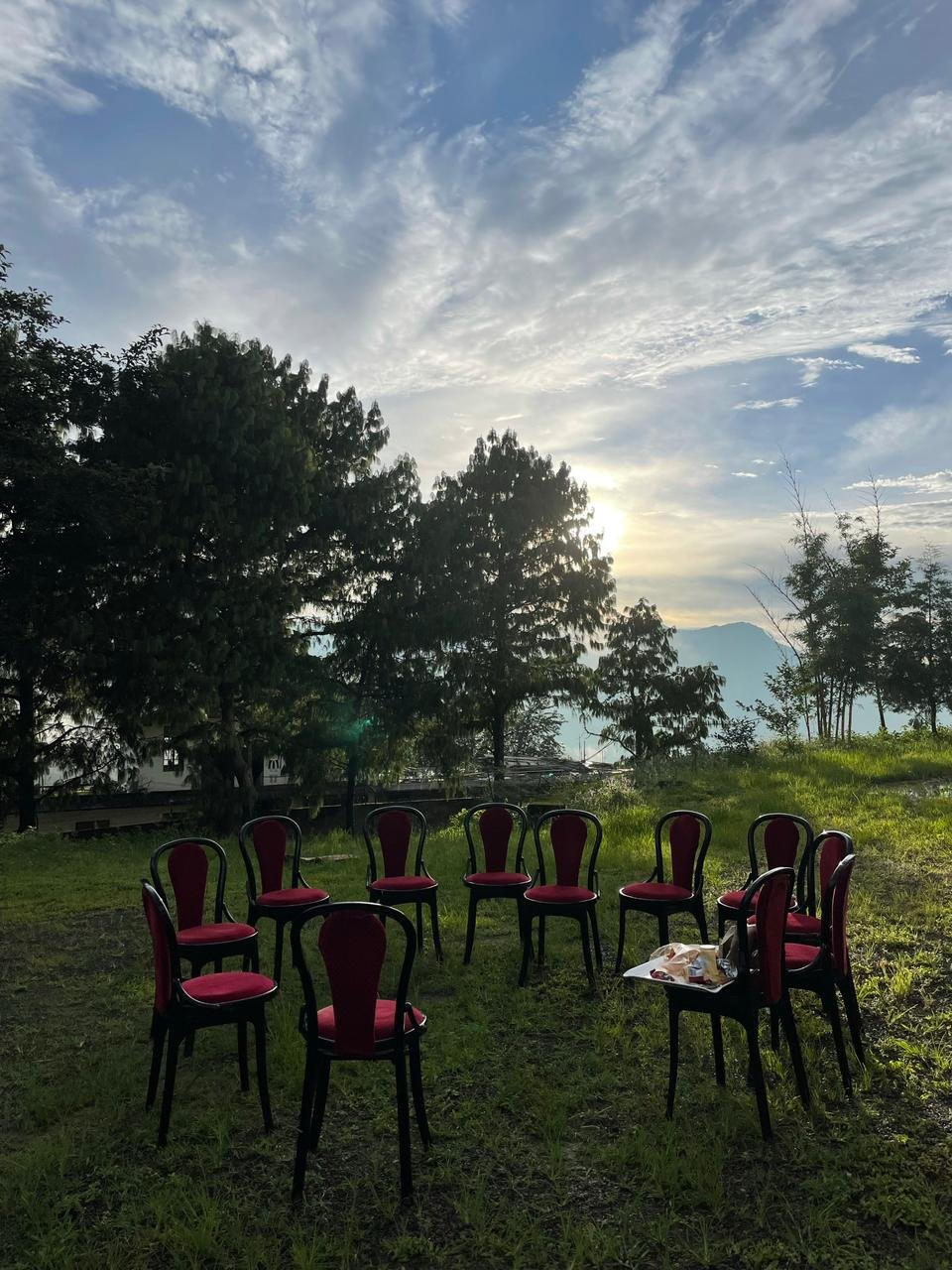
Your Custom Text Here
What happens when artists from diverse backgrounds come together for a week to create art? At the foot of Pulie Badze in Kohima, seven artists came together, each bringing with them experiences both local and from places well beyond our borders. As this unique group came together, it was evident that any challenge, question or prompt would foster a host of responses, solutions and engagement. A conversation involving diverse voices and vast subjects cannot be simple. Yet art, in its beauty, finds a way to make sense of this complexity.
Clouds rolled across the hills and artists brainstormed initial ideas, stepping out into the surroundings and stepping in to memory and the self. And all of a sudden, like when the clouds cleared, artists found clarity; there were sparks of ideas. Ideas that were informed by both independent and collective imagination. A program intentionally absent of a theme immediately found hooks and connections to our context. That of the land, of traditions and history, of diversity, of culture, of personhood and the expanse the word ‘Naga’ elicits. We were challenged then to go a little deeper beyond immediate interpretations. Aided by group conversations within and by resource people, we were able to prime a foundation to begin a conversation on what our work was going to be and would be about.
As the surroundings informed the usage of materials, the artists had to search beyond the studio, beyond the TaFMA campus. Coming back from sourcing their scavenged and surprise materials, artists found their meditative spaces to draw, plan and start building their work. For some artists the sourcing happened through a process of deep thinking, accessing the extents of imagination and in the energy of constantly pushing towards the new. In all cases there was more than we required for the week.
The works produced over the 8-day residency is a collection of processes realised into one possible rendition. The extent of possible outcomes of these investigations and research is yet to be discovered. The works presented here speak of balance, a co-existence with human, nature, modernity, technology; a space that upholds ones own and yet celebrates the diversity. It speaks of unlearning and finding new methods of learning. There is a thread of celebrating roots, yet adopting responsibly the modern and the new. The exhibition is about learning, making sense and re-presenting the indigenous as well as the imagined. This is happening through the evidence as well as the process and materiality. The works celebrate our cultures, values and collective knowledge; they are part of a connection we have to our ancestors. Celebrating an ‘unbroken chain of wisdom’.
What happens when artists from diverse backgrounds come together for a week to create art? At the foot of Pulie Badze in Kohima, seven artists came together, each bringing with them experiences both local and from places well beyond our borders. As this unique group came together, it was evident that any challenge, question or prompt would foster a host of responses, solutions and engagement. A conversation involving diverse voices and vast subjects cannot be simple. Yet art, in its beauty, finds a way to make sense of this complexity.
Clouds rolled across the hills and artists brainstormed initial ideas, stepping out into the surroundings and stepping in to memory and the self. And all of a sudden, like when the clouds cleared, artists found clarity; there were sparks of ideas. Ideas that were informed by both independent and collective imagination. A program intentionally absent of a theme immediately found hooks and connections to our context. That of the land, of traditions and history, of diversity, of culture, of personhood and the expanse the word ‘Naga’ elicits. We were challenged then to go a little deeper beyond immediate interpretations. Aided by group conversations within and by resource people, we were able to prime a foundation to begin a conversation on what our work was going to be and would be about.
As the surroundings informed the usage of materials, the artists had to search beyond the studio, beyond the TaFMA campus. Coming back from sourcing their scavenged and surprise materials, artists found their meditative spaces to draw, plan and start building their work. For some artists the sourcing happened through a process of deep thinking, accessing the extents of imagination and in the energy of constantly pushing towards the new. In all cases there was more than we required for the week.
The works produced over the 8-day residency is a collection of processes realised into one possible rendition. The extent of possible outcomes of these investigations and research is yet to be discovered. The works presented here speak of balance, a co-existence with human, nature, modernity, technology; a space that upholds ones own and yet celebrates the diversity. It speaks of unlearning and finding new methods of learning. There is a thread of celebrating roots, yet adopting responsibly the modern and the new. The exhibition is about learning, making sense and re-presenting the indigenous as well as the imagined. This is happening through the evidence as well as the process and materiality. The works celebrate our cultures, values and collective knowledge; they are part of a connection we have to our ancestors. Celebrating an ‘unbroken chain of wisdom’.